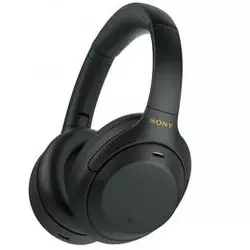Sony WH-1000XM4 review: still the best full-size noise-cancelling headphones
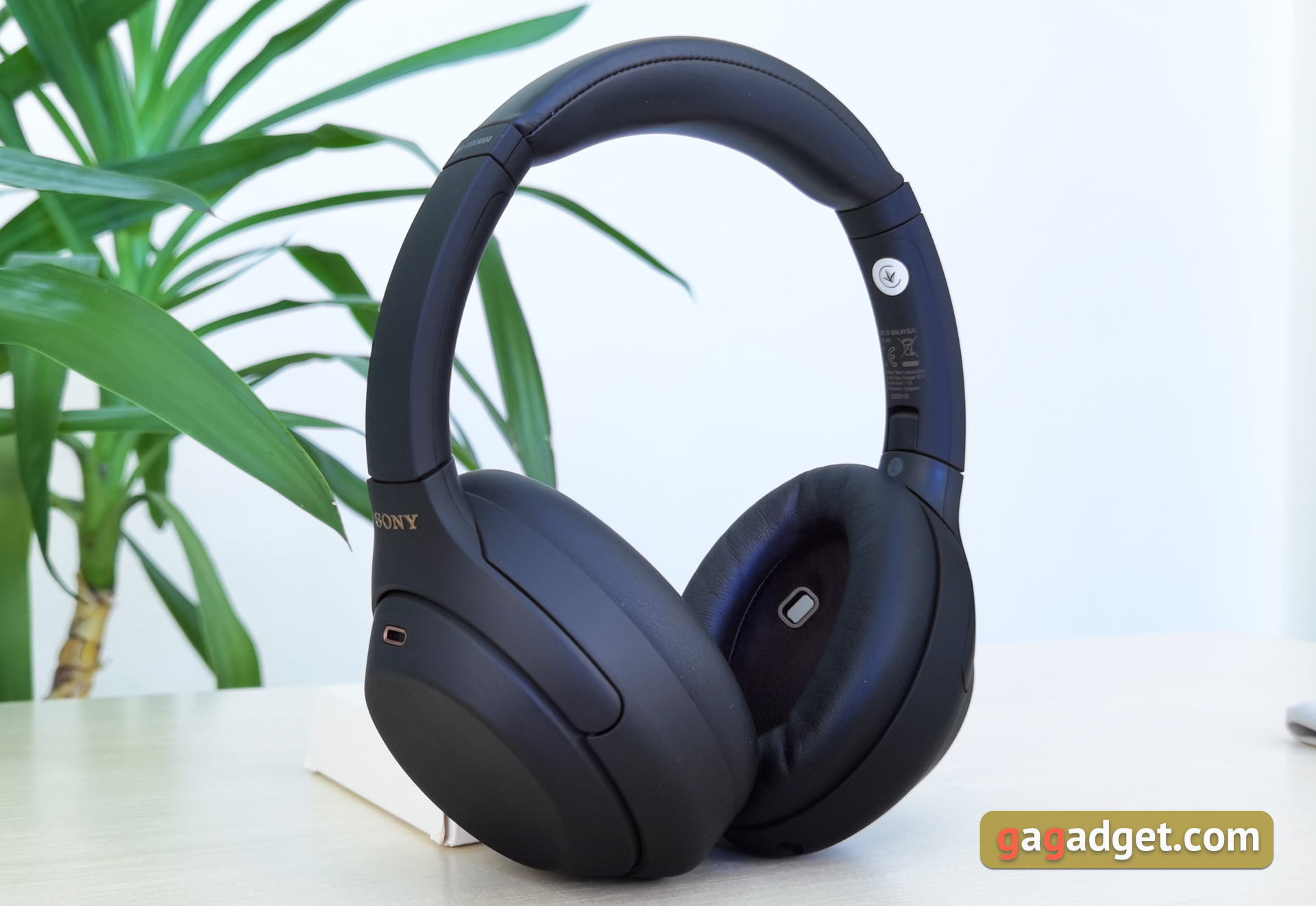
The Sony WH-1000XM4 is currently one of the best (if not the best) full-size wireless active noise cancelling headphones in its class. It's that rare case where with each generation the company doesn't have to develop a model from scratch, but rather improves on an already highly successful existing model yet again. Which, by the way, is not so easy. In the new model, Sony has expanded the functionality of the headphones and added a number of handy gizmos. In particular, auto-pause when you remove the headphones or during a dialogue. Also, the headphones got the ability to pair with two devices simultaneously and got an updated technology to improve the compressed audio DSEE Extreme. The Sony WH-1000XM4 is still comfortable to use, sounds good and lasts long on a single battery charge. There are only a couple of minor quibbles, and to call them reasons not to buy the model would probably be unfair. First is the lack of support for aptX and aptX HD codecs. Although almost all modern Android smartphones support LDAC, so you can not call it a problem. Secondly, to be completely happy, we lack moisture protection. And finally, we must realize that this is a mass model, not an audiophile and incredible miracles in terms of sound should not be expected.
6 reasons to buy Sony WH-1000XM4:
- excellent active noise cancelling system;
- nice, driving sound;
- uyy additional useful functions and opportunities;
- long battery life;
- comfortable design and intuitive touch control;
- excellent appearance, materials and assembly.
3 reasons not to buy Sony WH-1000XM4:
- you are not morally ready to pay such amount of money for the headphones;
- you have the previous model (the difference is not so cardinal);
- you are an audiophile and are looking for headphones with appropriate sound.
Quick link:
- What's in the box?
- What's new compared to the Sony WH-1000XM3?
- What does the Sony WH-1000XM4 look like?
- How comfortable is the Sony WH-1000XM4?
- What about sound and microphone quality?
- How well does the noise cancellation work?
- What about battery life?
- In a dry run
What's in the box?

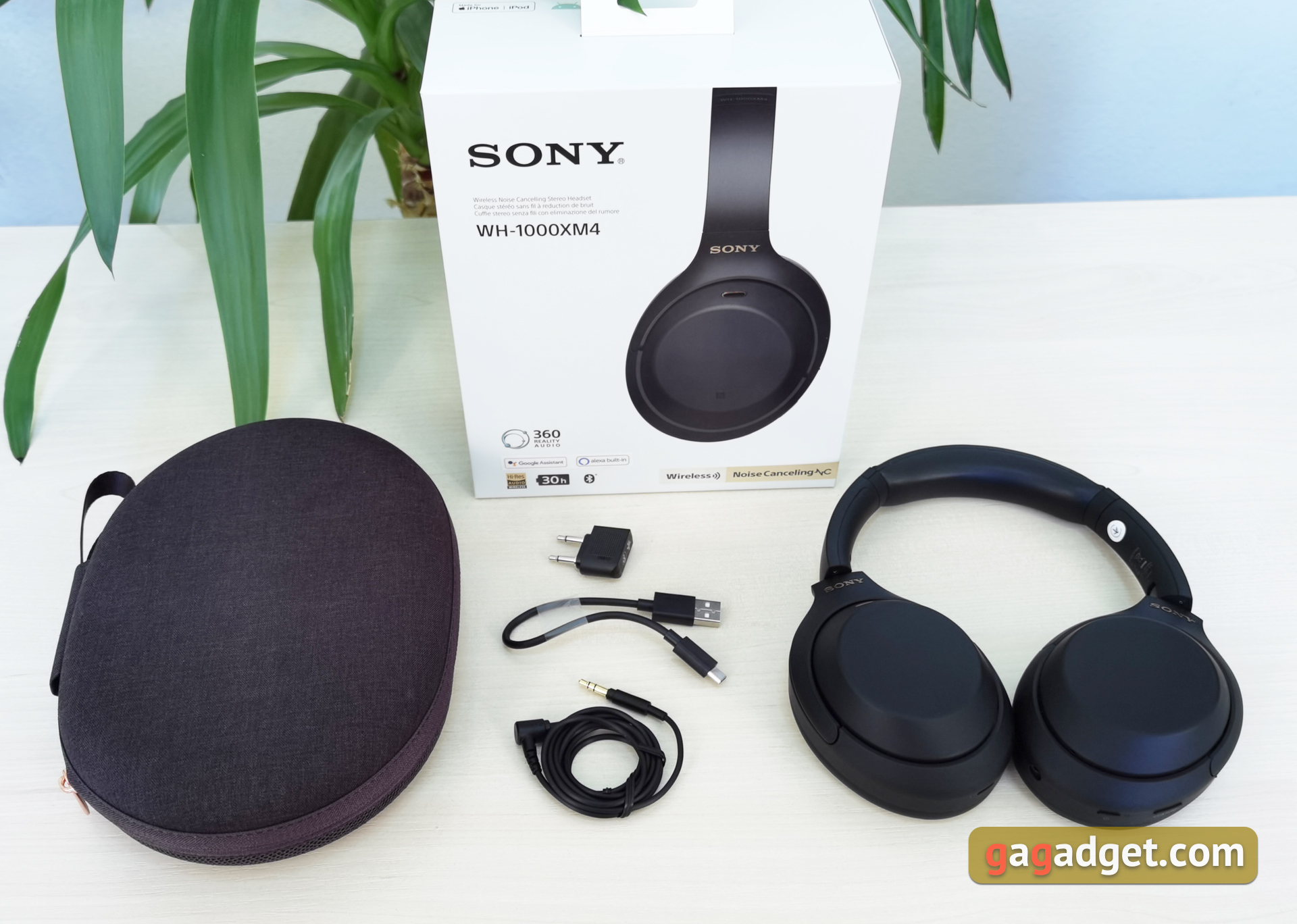
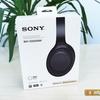

The Sony WH-1000XM4 package is absolutely unchanged from the last generation. The headphones are shipped in a big beautiful box with lots of printing. Inside there is a hard case for transportation in which there is everything else. The headphones themselves, USB Type-C cable for charging, 1.2 m audio cable for wired connection, cable adapter and documentation.
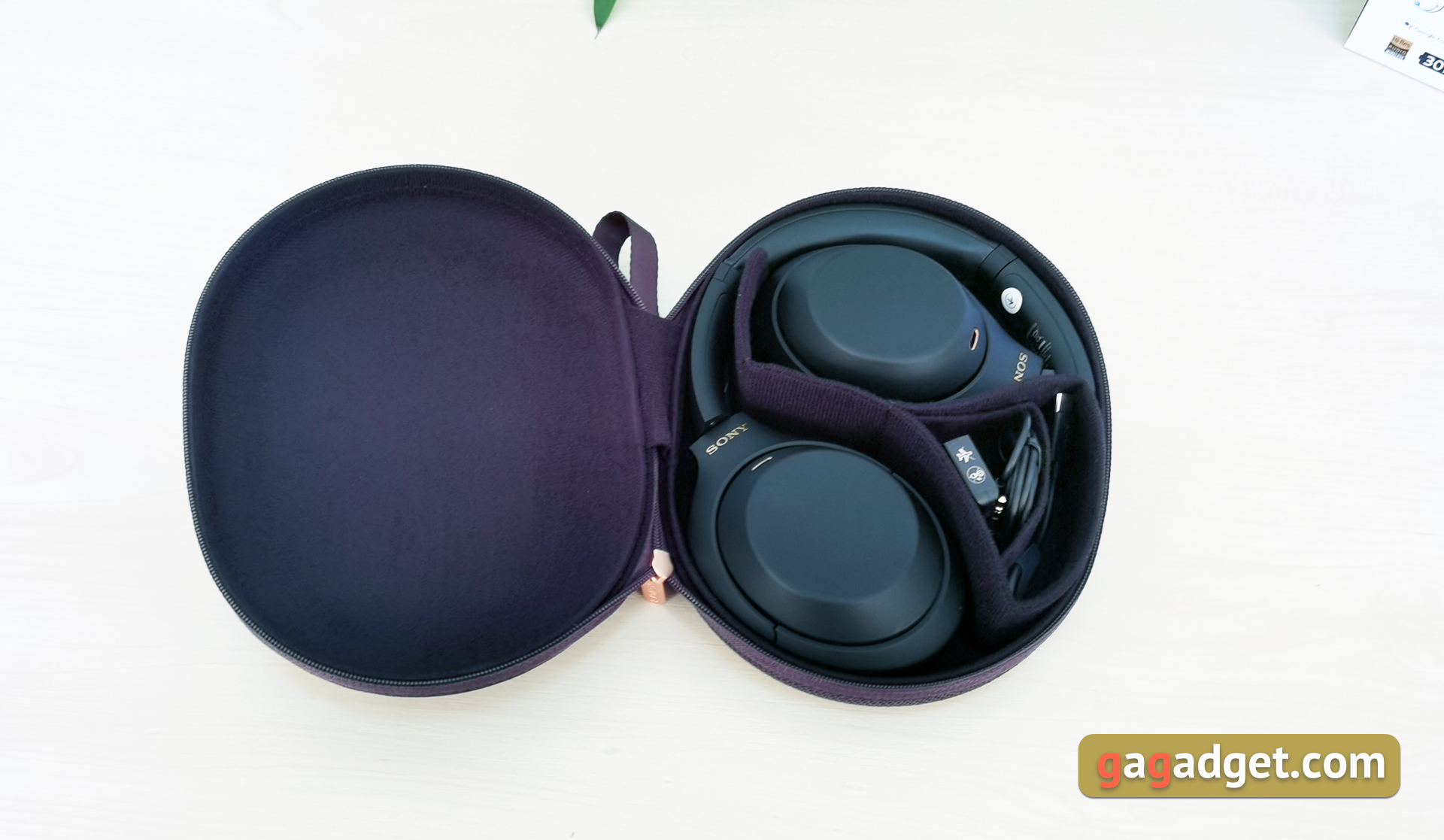
What's new compared to the Sony WH-1000XM3?
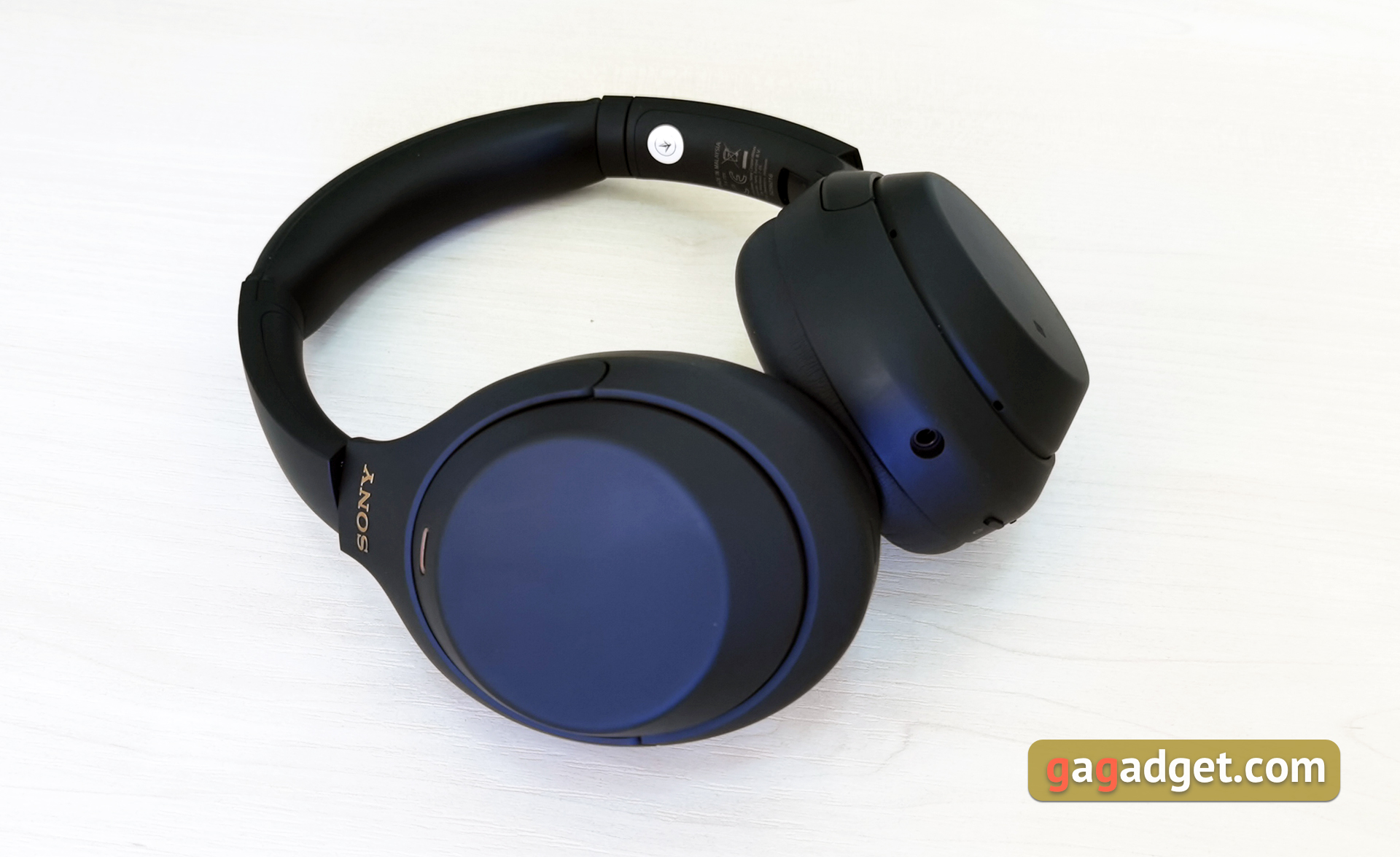
Visually, it's pretty hard to tell the difference between the Sony WH-1000XM4 (Mark 4) and the Sony WH-1000XM3. In general terms, the design is very similar. The main changes are in the functionality.
- The WH-1000XM4 has a sensor that allows the headphones to pause and resume playing automatically when you take them off.
- The same Sony QN1 chip is used as in the previous model, but the algorithms have been improved. And it is claimed that the noise reduction works even better. At the same time, adjustment for the individual user and the conditions of wearing headphones is preserved. As well as different scenarios depending on current activities and location.
- Instead of Bluetooth 4.2, now Bluetooth 5.0 is used and the option of simultaneous connection to two devices is available (but it does not work if LDAC is used).
- The list of supported codecs includes SBC, AAC and LDAC. That is aptX and aptX HD support is missing. I don't think it's a problem, I'll explain why below.
- The "Chat Chat" feature has appeared. Hearing a voice, the headphones will automatically stop the music and will restore playback after a set period of time after the last phrase.
- There is support for 360 Reality Audio (virtual surround sound) format, the corresponding recordings are already provided by Deezer and Tidal streaming services, among others. As far as I understand, the previous model with updates also got support for 360 Reality Audio.
- The WH-1000XM3 used DSEE HX technology to "enhance" compressed recordings. The Sony WH-1000XM4 used DSEE Extreme. I suspect a more advanced version in terms of algorithms and there won't be a critical difference in sound between the two.
- The manufacturer claims better microphones.
What does the Sony WH-1000XM4 look like?
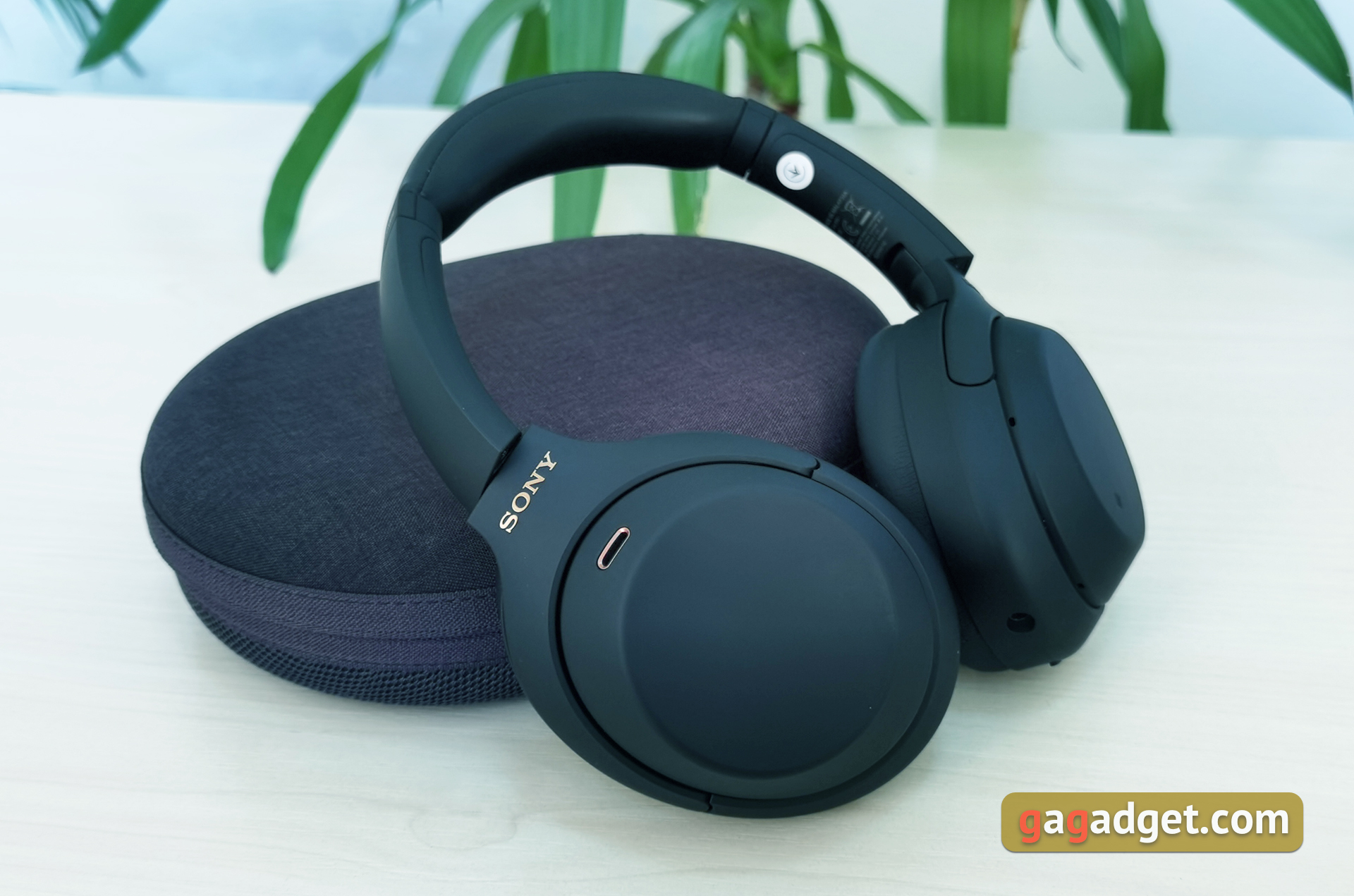
Sony WH-1000XM4 doesn't differ much from the previous version externally and structurally. What I think is a plus in this case: the headphones look very stylish and expensive. These are full-size headphones, the design uses mostly matte plastic. No gloss, the coating itself reminds soft touch but in reality it is not. At least not in the usual sense: the tactile sensations are similar, but prints Sony WH-1000XM4 practically do not collect. The model comes in two very quiet colors: black and light gray.
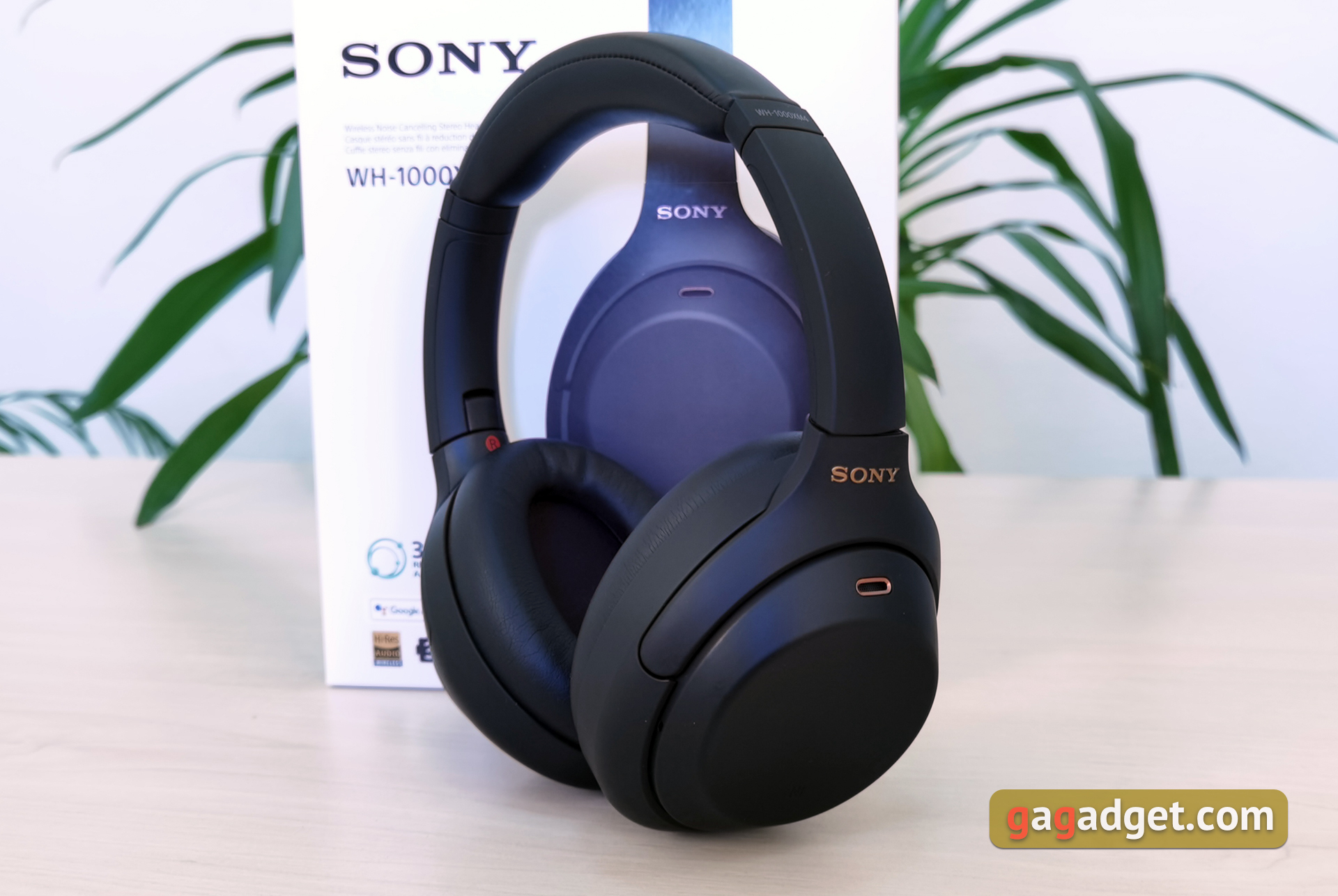
The cups are medium sized, they don't look big on your head. There is practically nothing on the front panels of the cups. Only the left one has a small embossed NFC logo and microphone holes around the perimeter. The previous version had the tag printed. Of decorative elements - a gold-plated Sony logo on the "plugs" fixing the cups to the headband and the same gold trim on the noise-mode microphones just below.
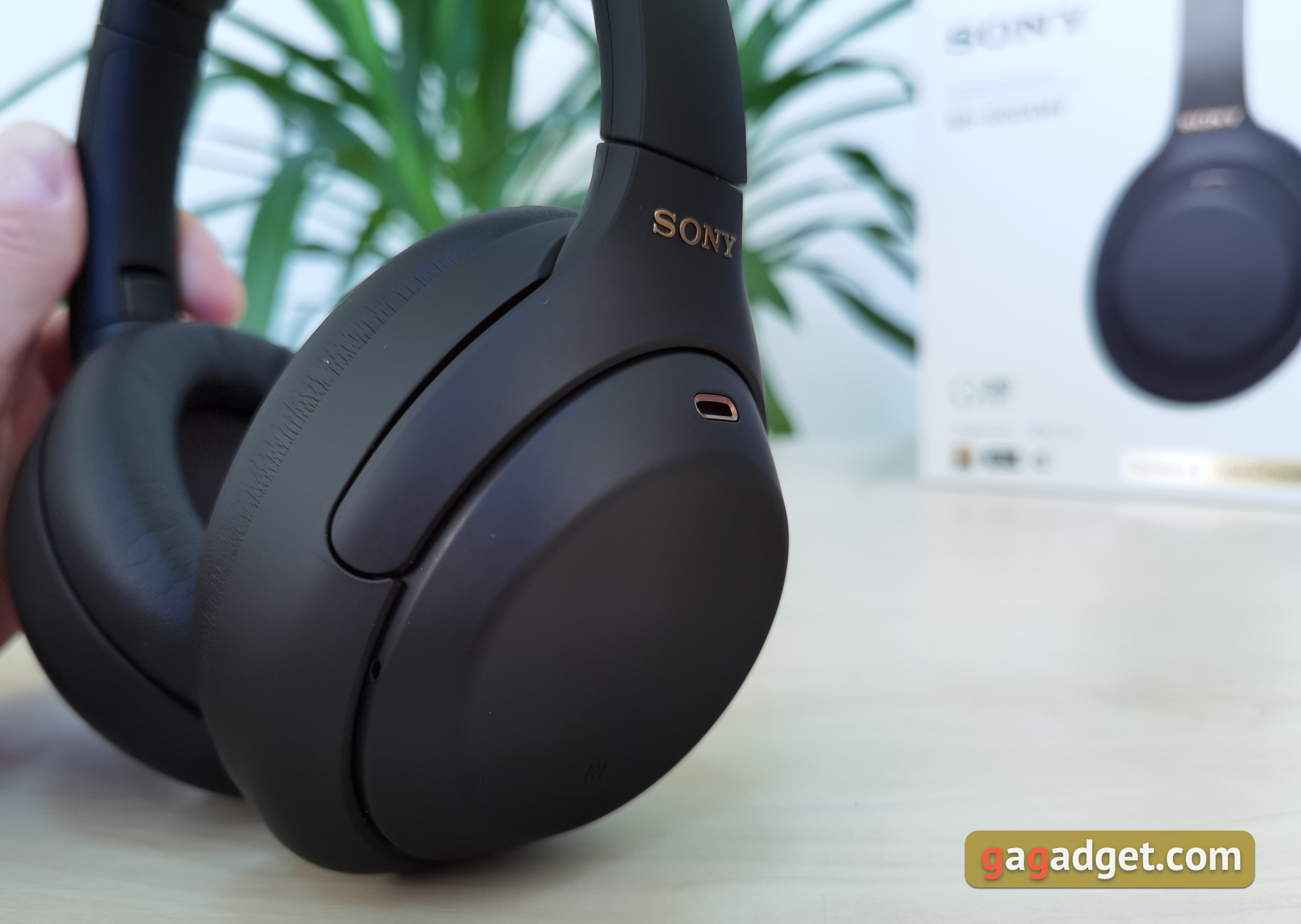
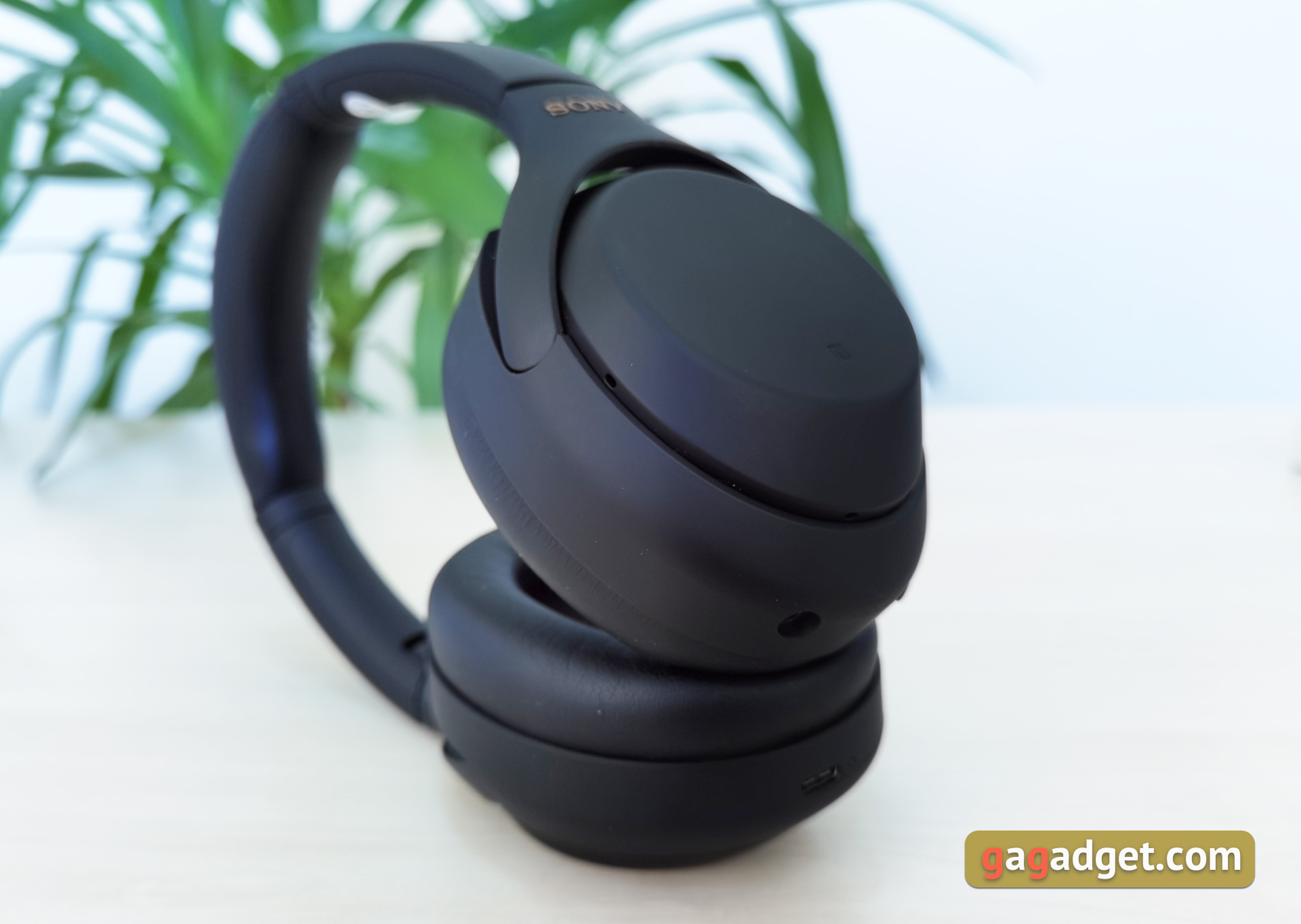

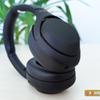
The design of the headband is standard, with sliding mechanisms for size adjustment and a metal inner frame for strength. The top of the headband is upholstered in faux leather, with foam filler on the inside. The left and right designations are placed next to the cups on the inside of the headband.


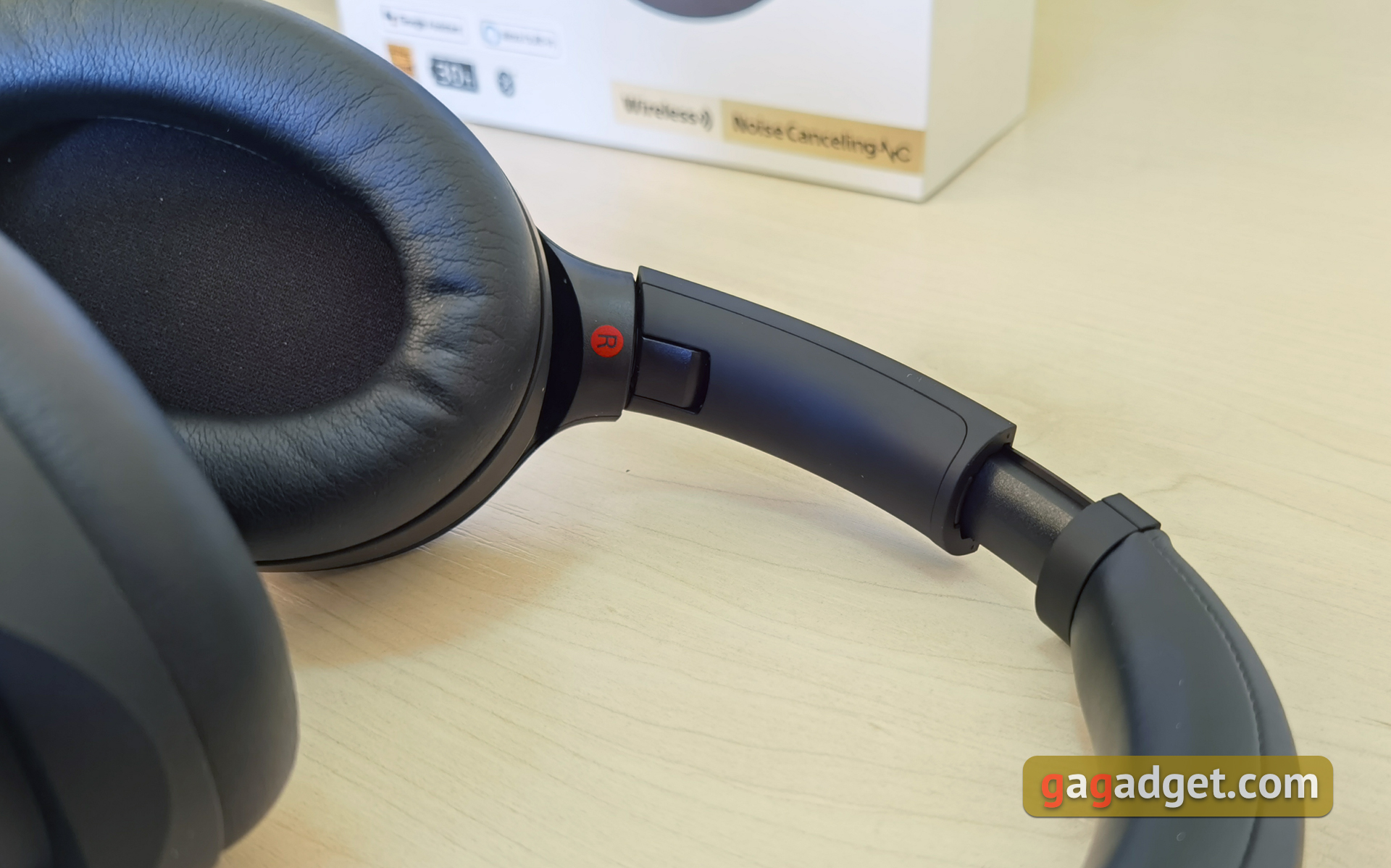
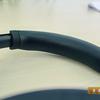
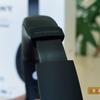
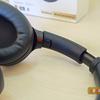
The design allows you to turn the cups towards you to conveniently hang the headphones around your neck when not in use. The Sony WH-1000XM4 also folds for transport in the supplied carrying case.
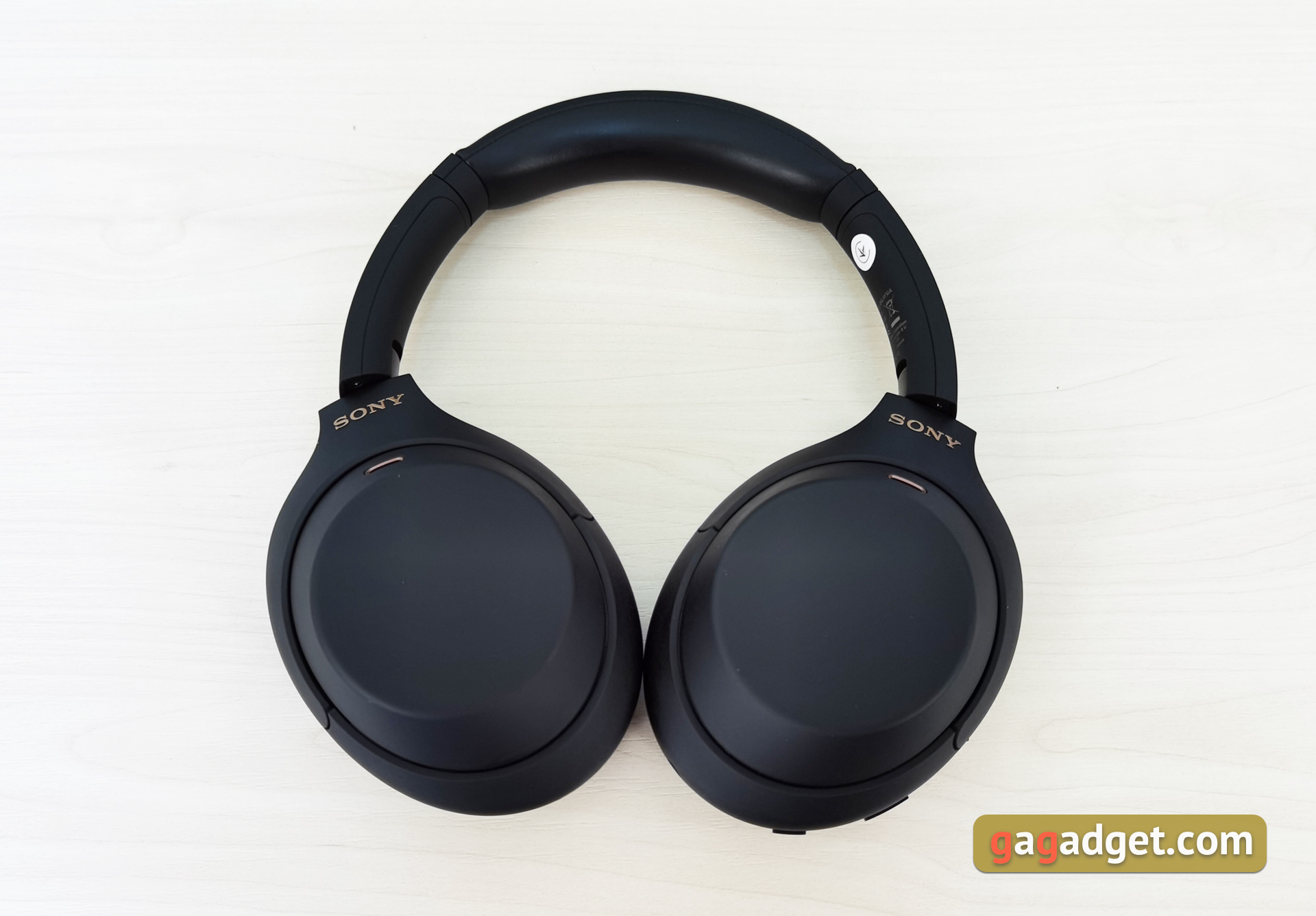
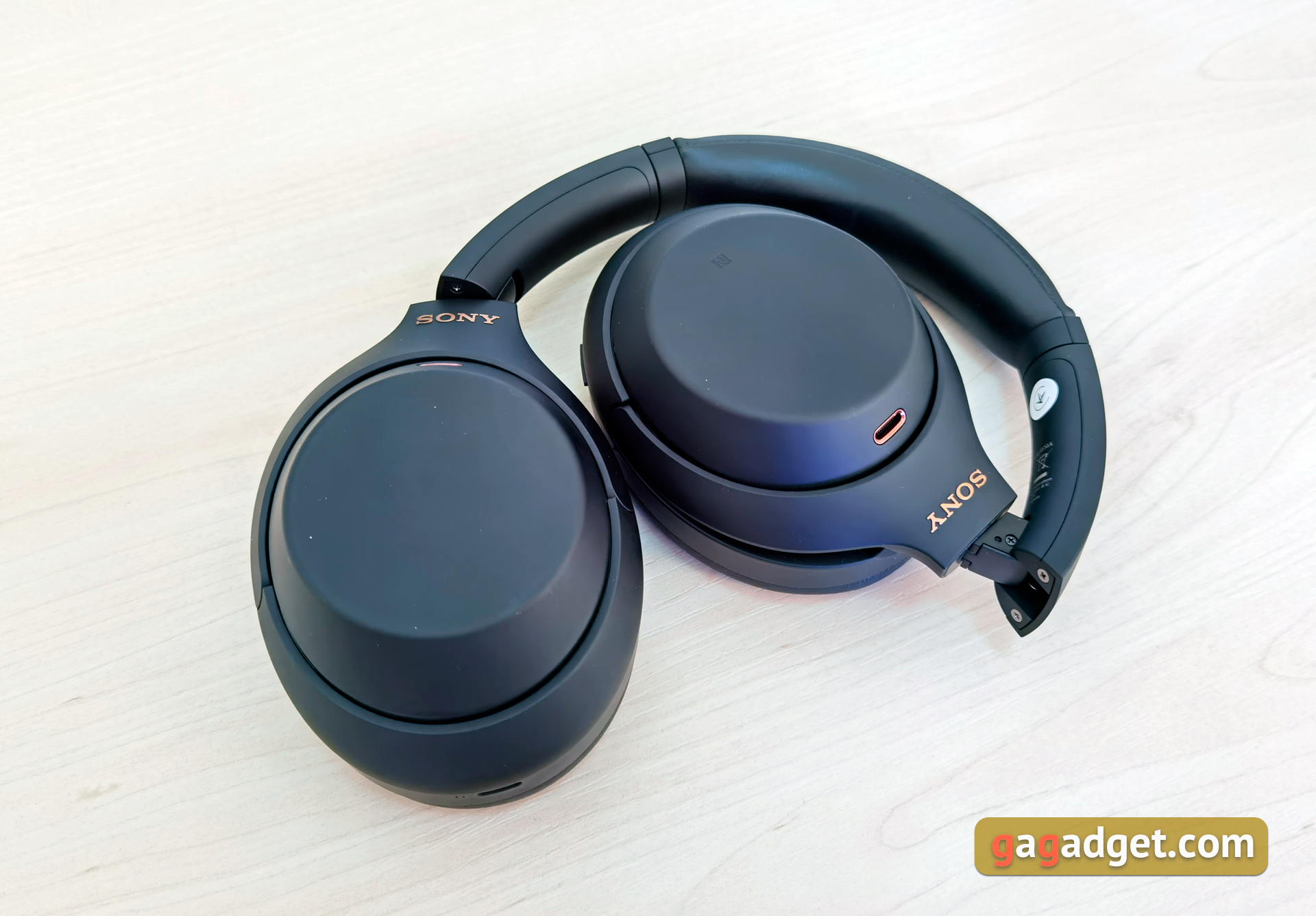
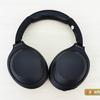
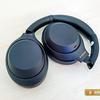
The ear cushions are also made of leatherette and the inside is fabric. They are quite wide, deep and very soft. Inside the left ear-cup there is an in-ear "presence" sensor, thanks to which the headphone automatically pauses and resumes playback.
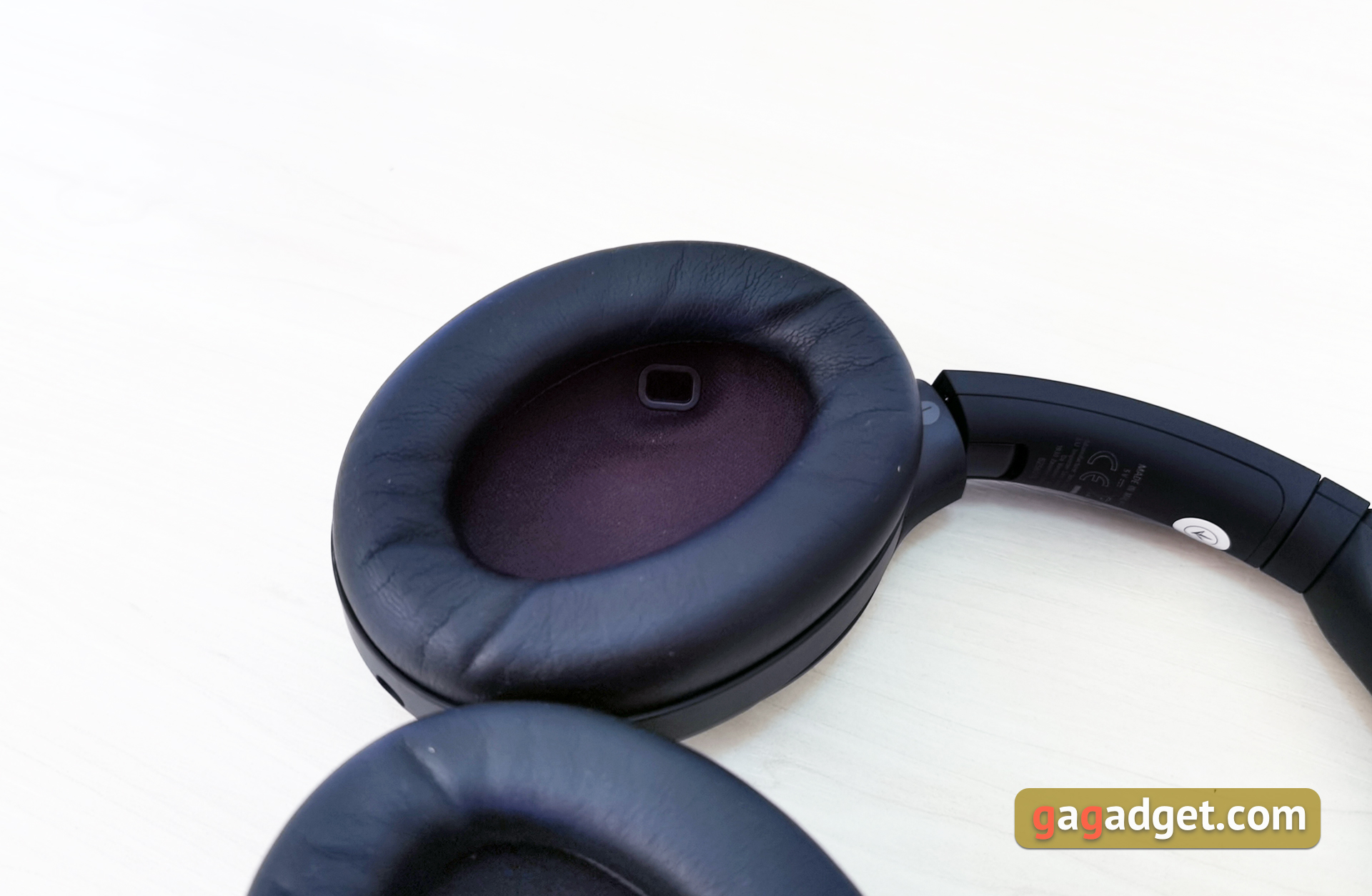
There are not many functional elements on the headphones. On the left earpiece there is a 3.5 mm jack for wired connection and two buttons. A power button with an LED and the so-called Custom, the action of which can be configured in the application. The default is surround sound control. A short press toggles the noise cancelling modes and a long press starts its optimizer. Only USB Type-C is visible on the right earpiece. Everything else is controlled by the touchpad on the lid of the right ear cup.
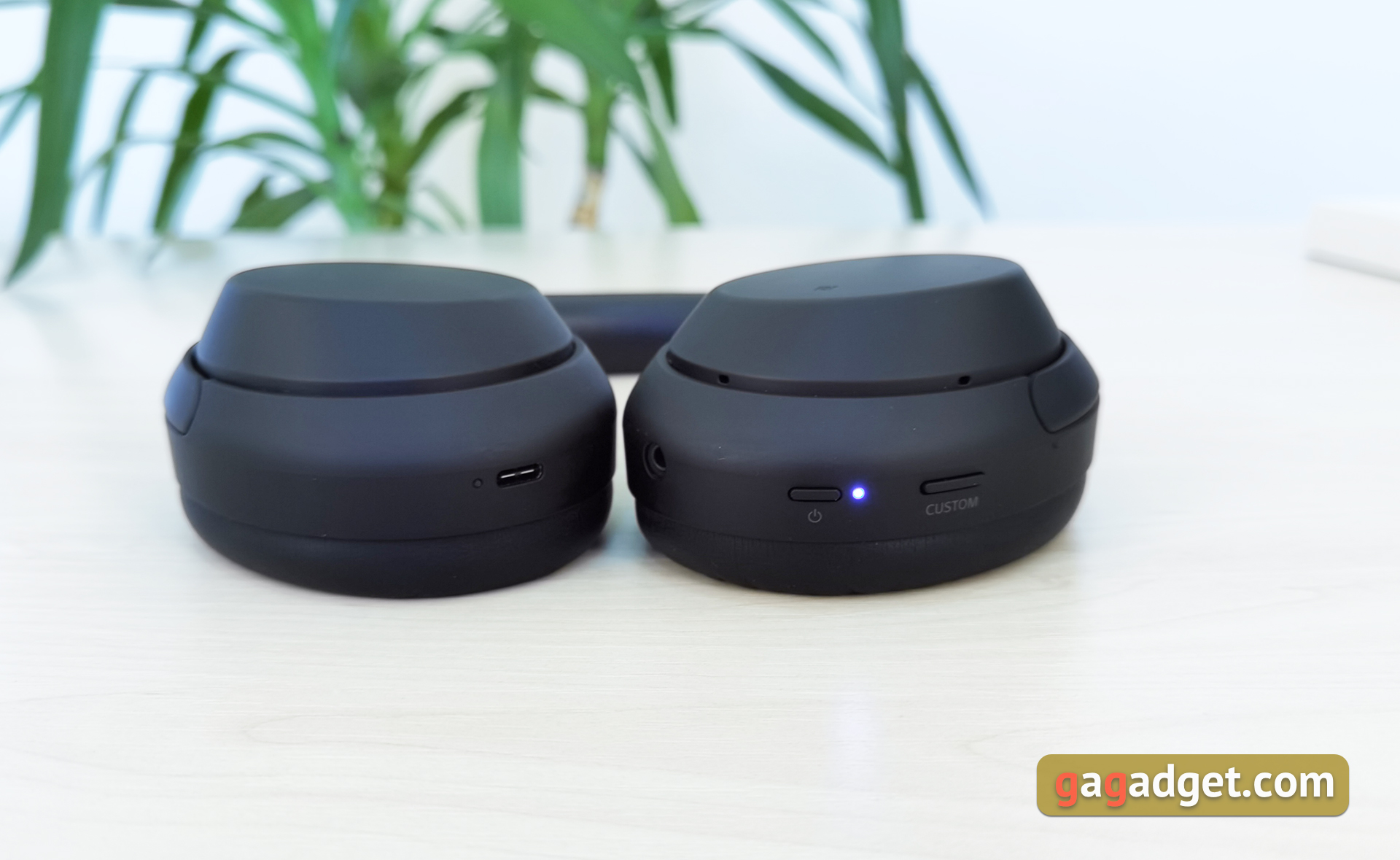
There is nothing to complain about in terms of quality of materials, build and appearance. These are our flagship headphones, they feel and look just right. It is possible that users of previous models of the range will be upset a little bit by the almost total absence of design differences in the Sony WH-1000XM4. But it seems to me there is not much to add.
How comfortable is the Sony WH-1000XM4?
Sony WH-1000XM4 is a medium-sized full-size headphone with a decent range of headband size adjustment and a low (considering the form factor) weight. We couldn't find exact figures on the official website, but the previous model weighed 255g, I don't think the difference is drastic. The size of the cups and ear cushions allow the ears to be fully inside, and the headband hold is optimal. There's no pressure on the headphones. You can sit almost the whole day at work (which I did) without any discomfort or desire to take them off. As for the street, in the summer, in +27° - +30 ° ears mist up. Not critical and half an hour walk in the fresh air does not turn into hell, but still full-size headphones in general is not the best option for a hot summer. I didn't find any models that don't make my ears sweat in hot summer weather. Moreover in this case it is important to use leatherette fabric for good sound insulation. A more breathable fabric is not suitable for that.
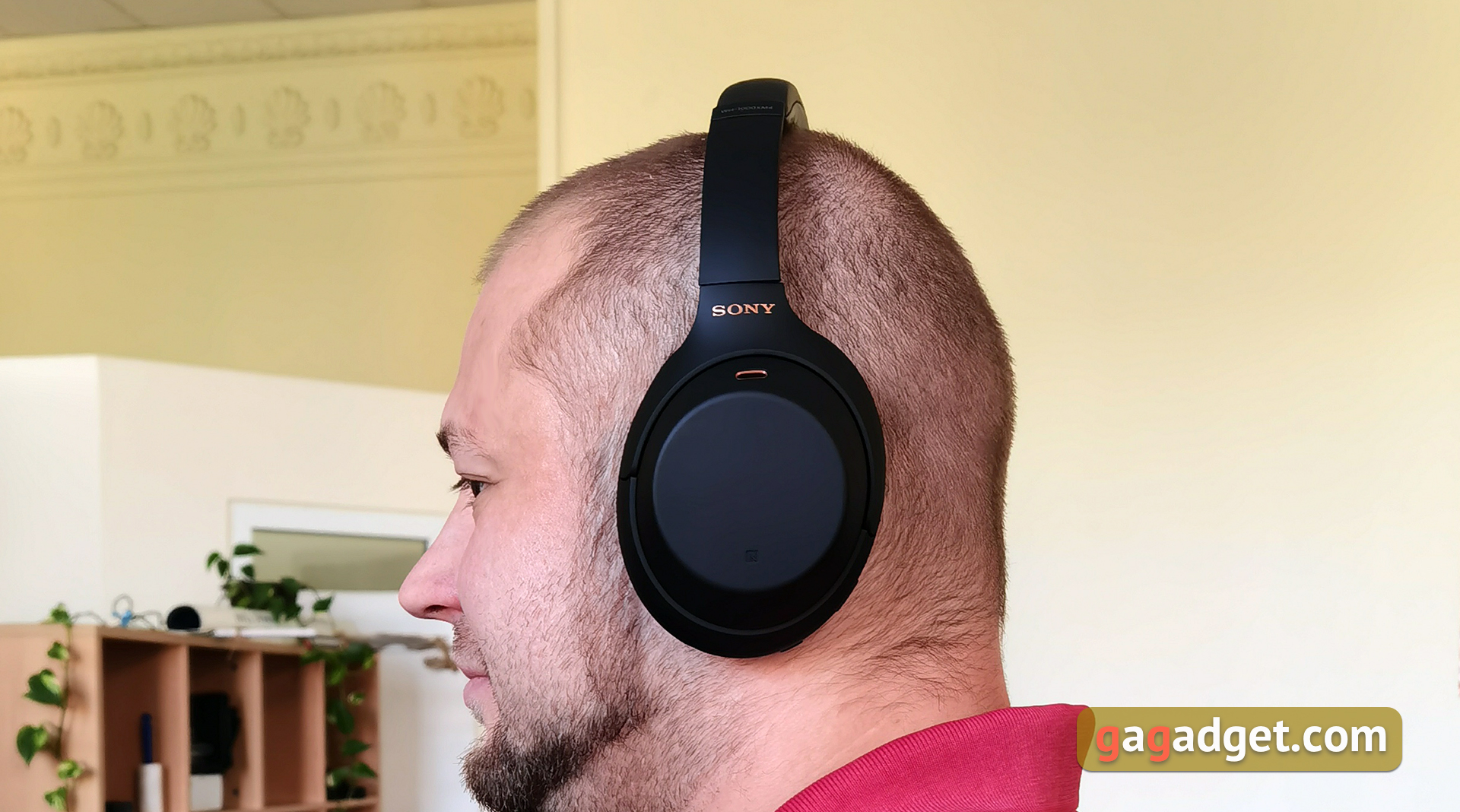
Connection is done in a standard way: you should press the power button and wait until the LED blinks, then the familiar procedure is done on the smartphone. They promise a stable connection at a distance of up to 10 meters. Connection quality depends on a number of factors, starting from banal walls and ending with the general load of the radio channel. At a distance of 6-7 meters with one wall I have not observed "dropouts". There is an interesting situation with codecs: SBC, AAC and LDAC are supported, aptX and aptX HD are not. It is hard to say what it has to do with it. But I don't see any critical problem: LDAC is available as open source and has been a part of the Android "standard package" since Android 8 Oreo, if memory serves me correctly. That said, the maximum bitrate can be as high as 990 Kbps. While the limit of aptX HD is 576 Kbps, and aptX/aptX HD needs to be licensed from Qualcomm. During testing only the LDAC codec was used, its own phono library, approximately 95% of which is in FLAC. And as a streaming music service - Deezer HiFi with FLAC up to 1411 kbps. Of course, don't expect absolutely all tracks on the service to be provided exactly in maximum quality.
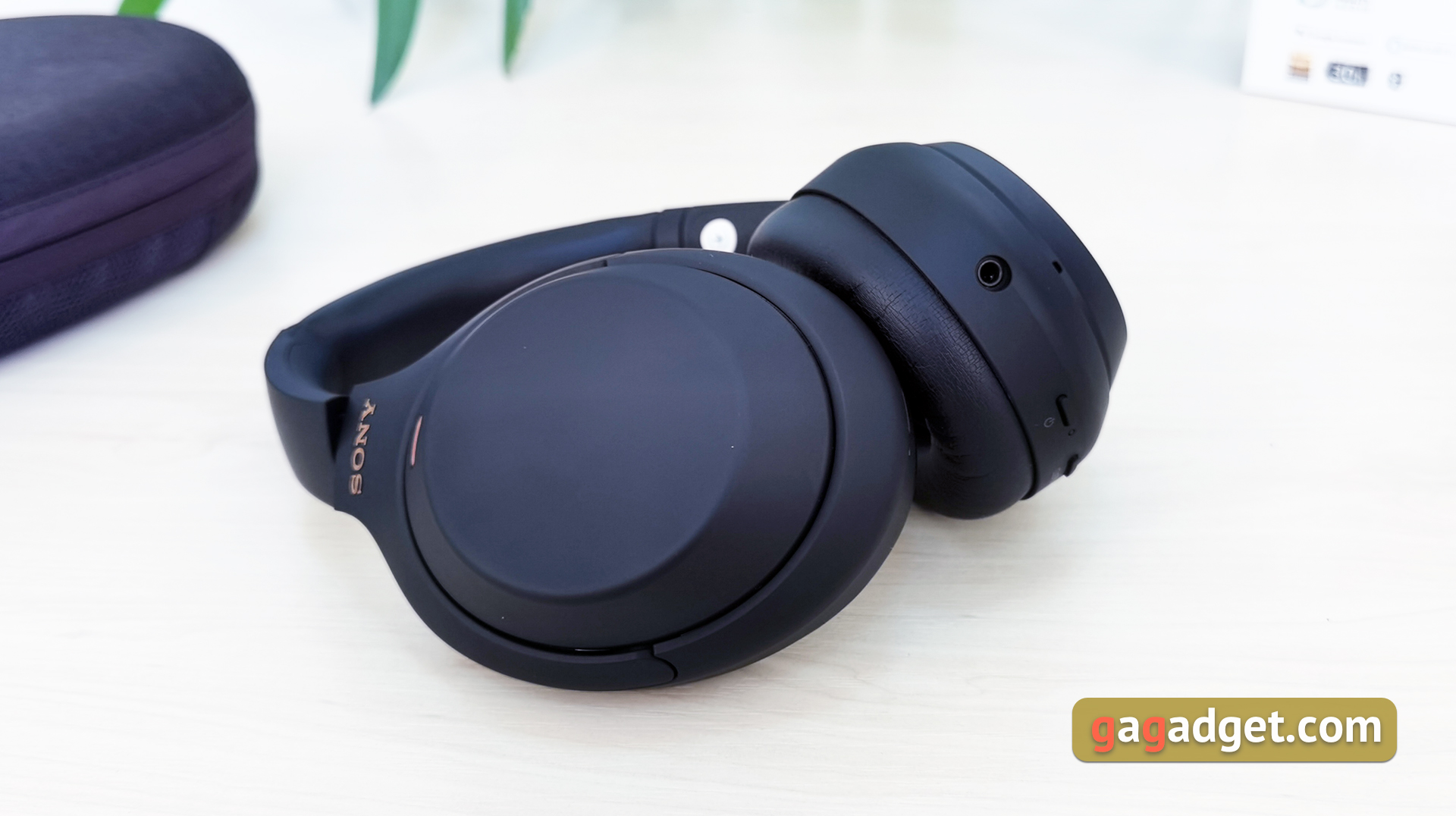
On-the-go control is performed with the touch panel on the right earpiece: horizontal movements are responsible for track switching, vertical - for volume control. A double tap is Play/Pause, as well as receiving and ending a call. And if you cover the right cup with your hand - "Attention mode" is activated to hear what is happening around. The controls are intuitive and straightforward. I haven't had a problem with the touch controls since I first launched it. I remember there were complaints online about the previous model, which had to do with the sensor working in cold weather, triggering for moisture and condensation. Sony promises that it has improved the behavior of the new model in the cold, this applies to both the sensor and the battery. Unfortunately, it is not possible to say how good/bad it really is at the moment for obvious reasons: it's hot outside. And walking in the rain in Sony WH-1000XM4 did not occur to me. At least because of the lack of any moisture protection.
The Sony WH-1000XM4 uses the Sony Headphones Connect proprietary application to control all Sony WH-1000XM4 functions. It is divided into three tabs. The first one called "Status" is not particularly functional. It displays the battery charge, the codec in use, the current track in the player, and adaptive sound control.
The second tab "Sound" is much more interesting. It configures the noise reduction level, the chat feature (automatically stops music when you start talking to someone), noise reduction optimizer, equalizer, 360 Reality Audio, sound quality mode (quality priority or connection stability) and enables DSEE Extreme enhancer.
In the third tab "System" you can configure connection to two devices simultaneously, select Custom button action (by default - surround sound control, can be reassigned to Amazon Alexa or Google Assistant), disable touchpad, configure auto-pause and auto-disconnect, select language of voice prompts and configure software auto-refresh.
Now about noise reduction and adaptive tweaking. In addition to the usual slider level adjustment through the application, there are three "presets" that you can switch on the headphones themselves with the Custom button (if you have not reassigned it to the voice assistant): full noise reduction, selective and full shutdown noise reduction. Adaptive audio management adapts itself to the current situation, including geolocation studies. And under each such situation you can adjust the level. For example, maximum level if you are in transport and minimum level if you are outdoors.
There is also a function of optimization for a particular user and the level of external pressure. The function is not new, it was also present in previous models. The app asks you to place the headphones in their usual position, after which the headphones begin to emit sounds at different frequencies, which are read by the corresponding microphones, inside the cups. Then algorithms, based on a bunch of factors (including even the presence of glasses) optimize the noise cancellation system for the specific conditions.
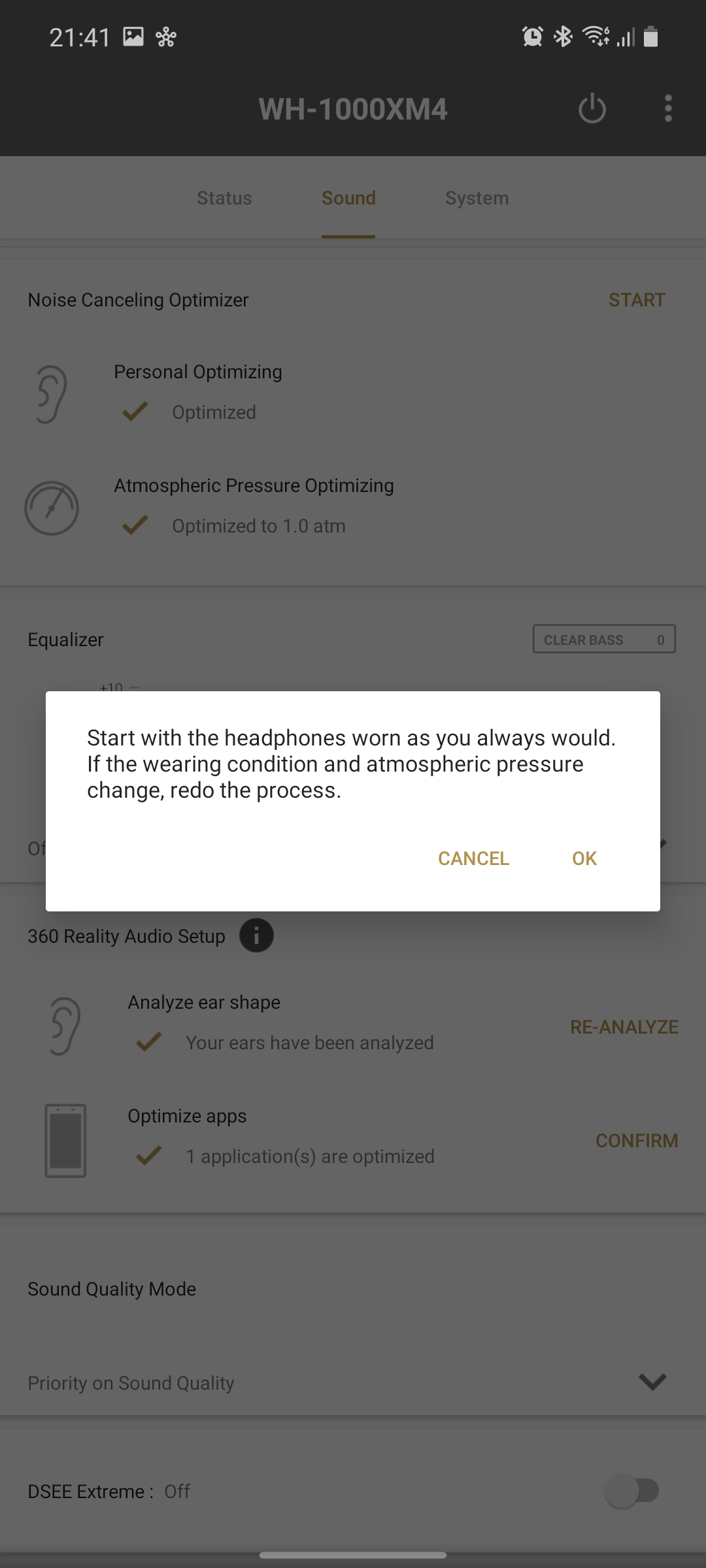
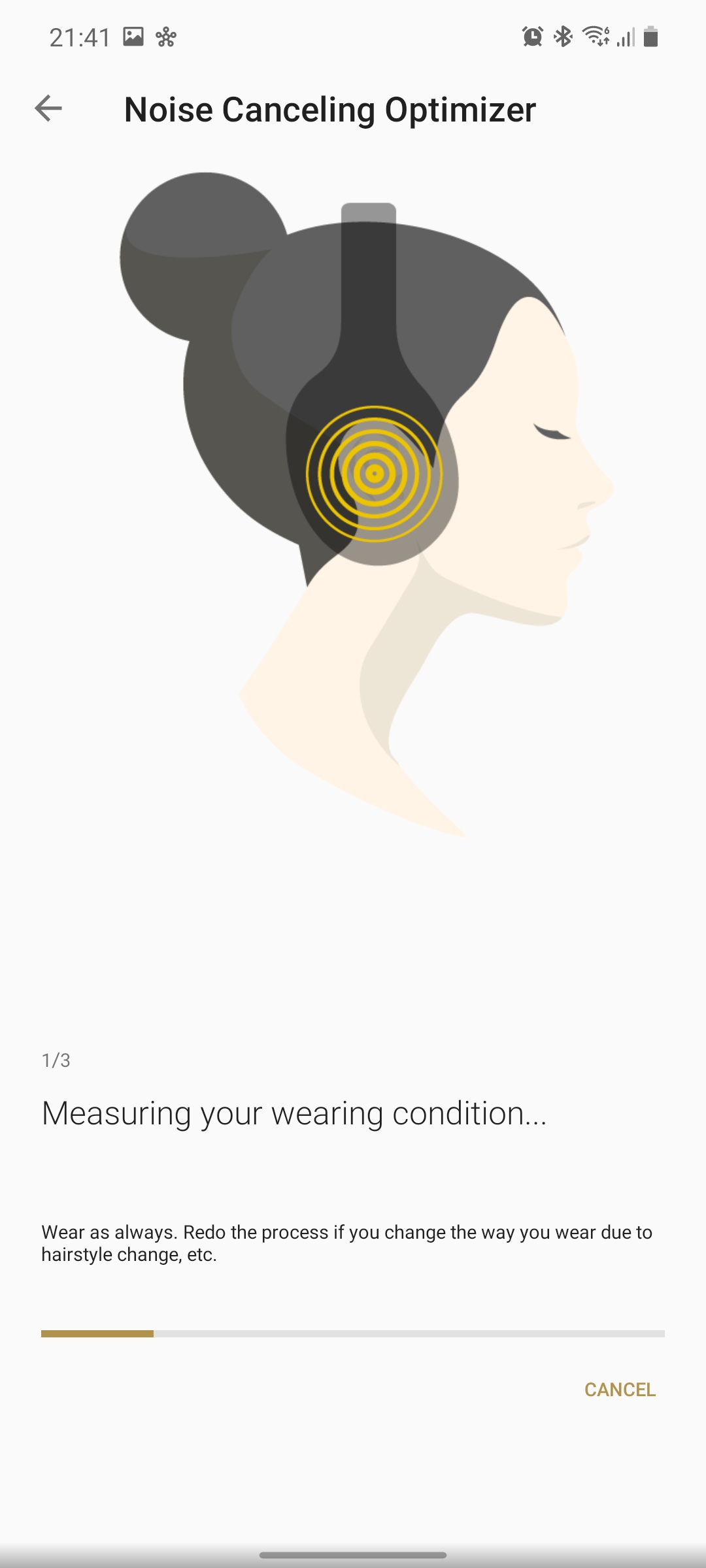
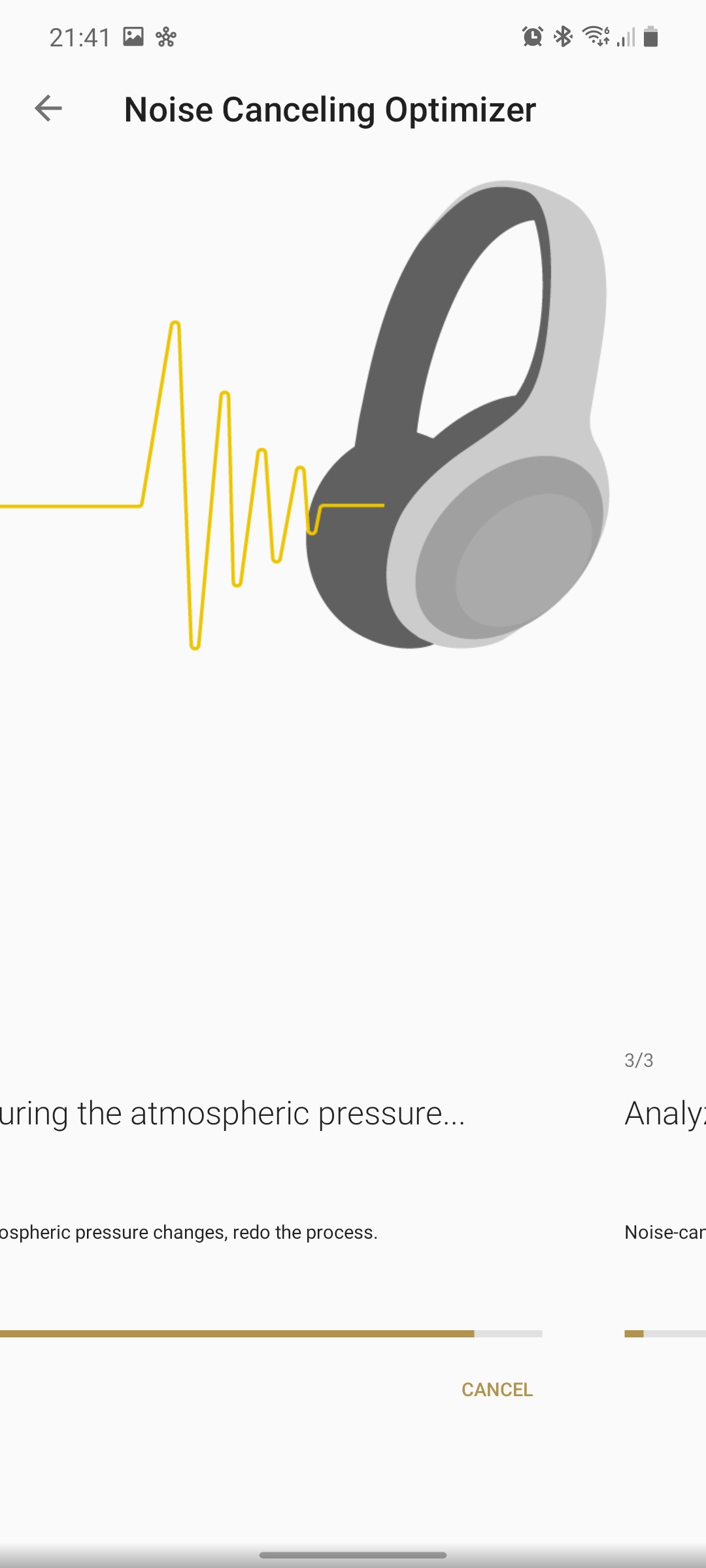



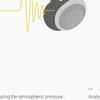

To set up 360 Reality Audio, the app asks the user to take pictures of their ears, and then the automation adjusts it all for the individual user. Next up is the app's customization. Content in 360 Reality Audio is available from Deezer, Nugs.net and Tidal. The last service is not shown in the list. Apparently, due to the fact that it is not officially available in our country.
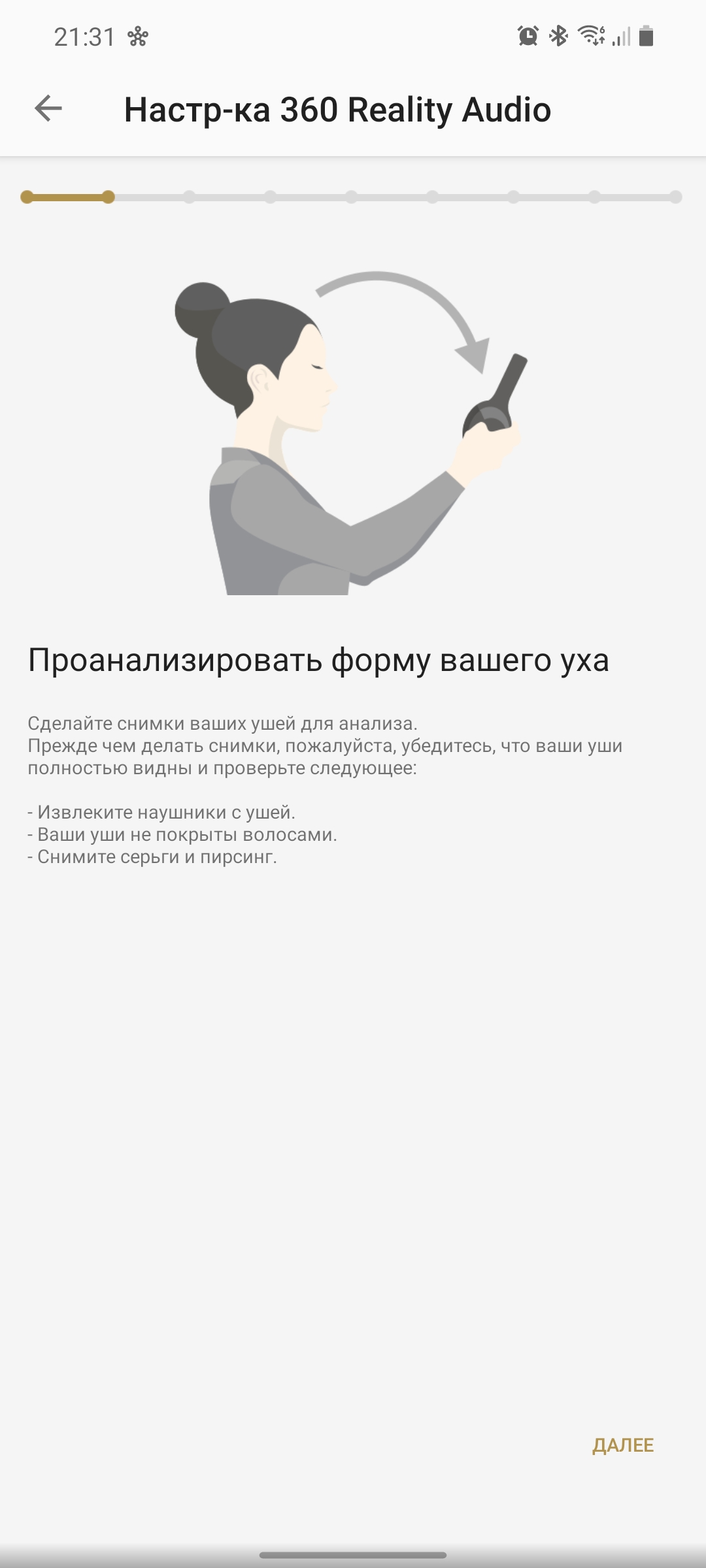
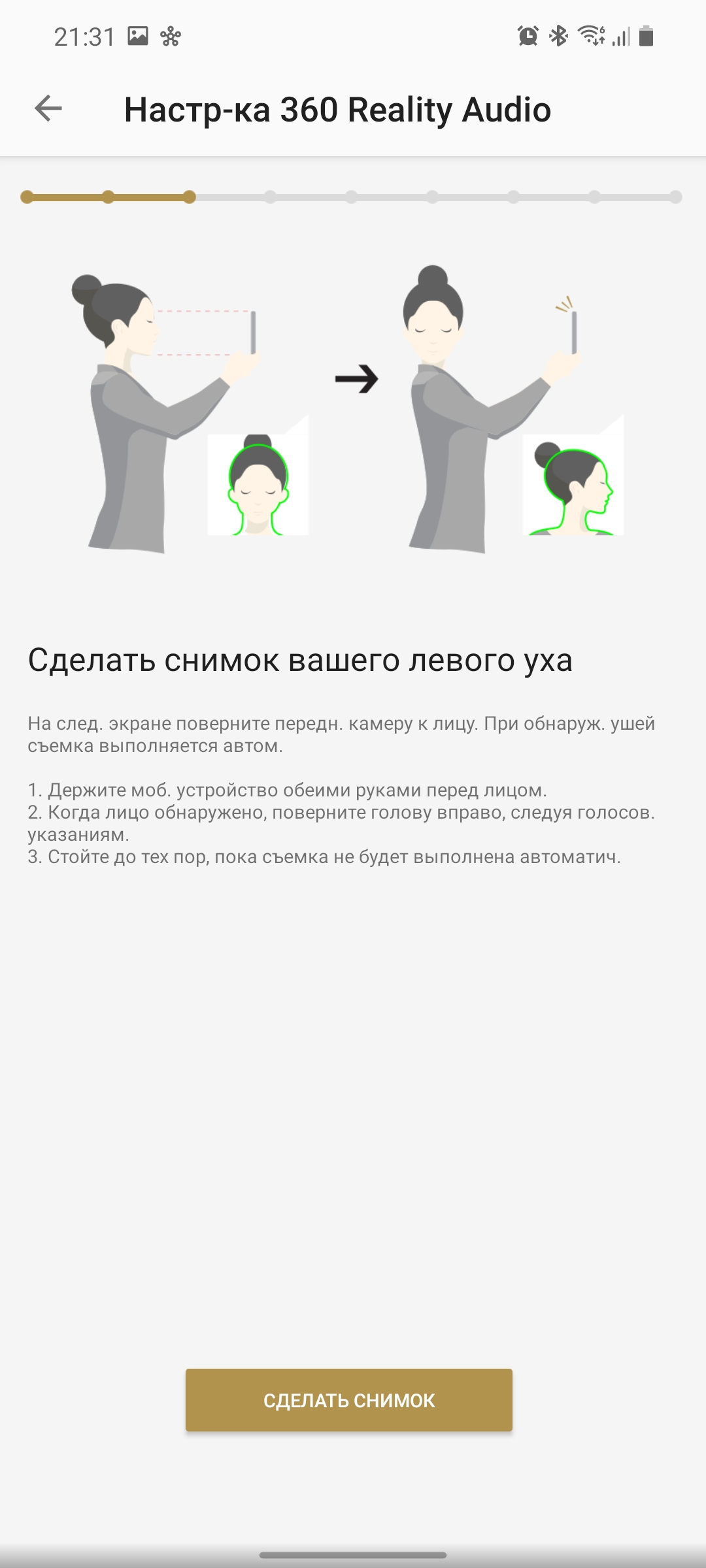
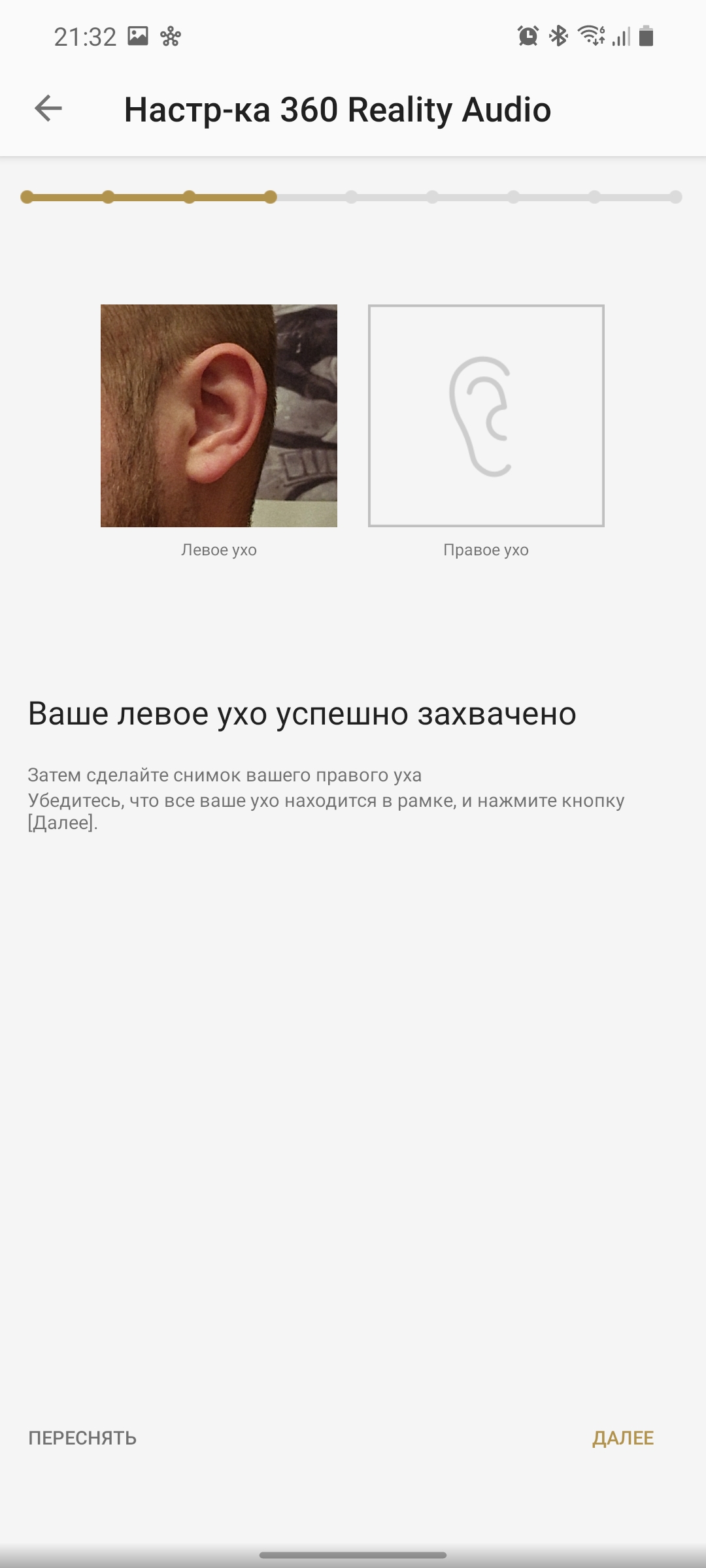
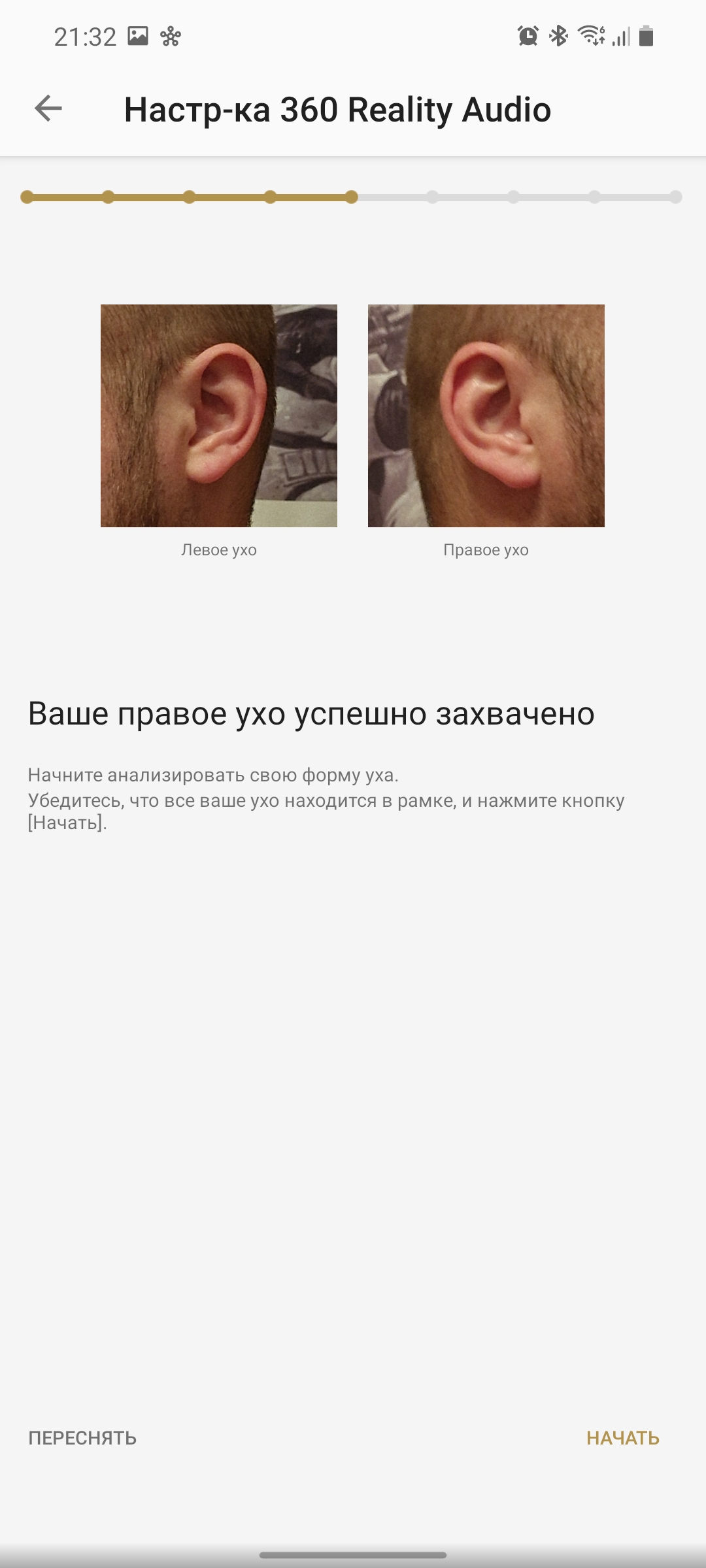
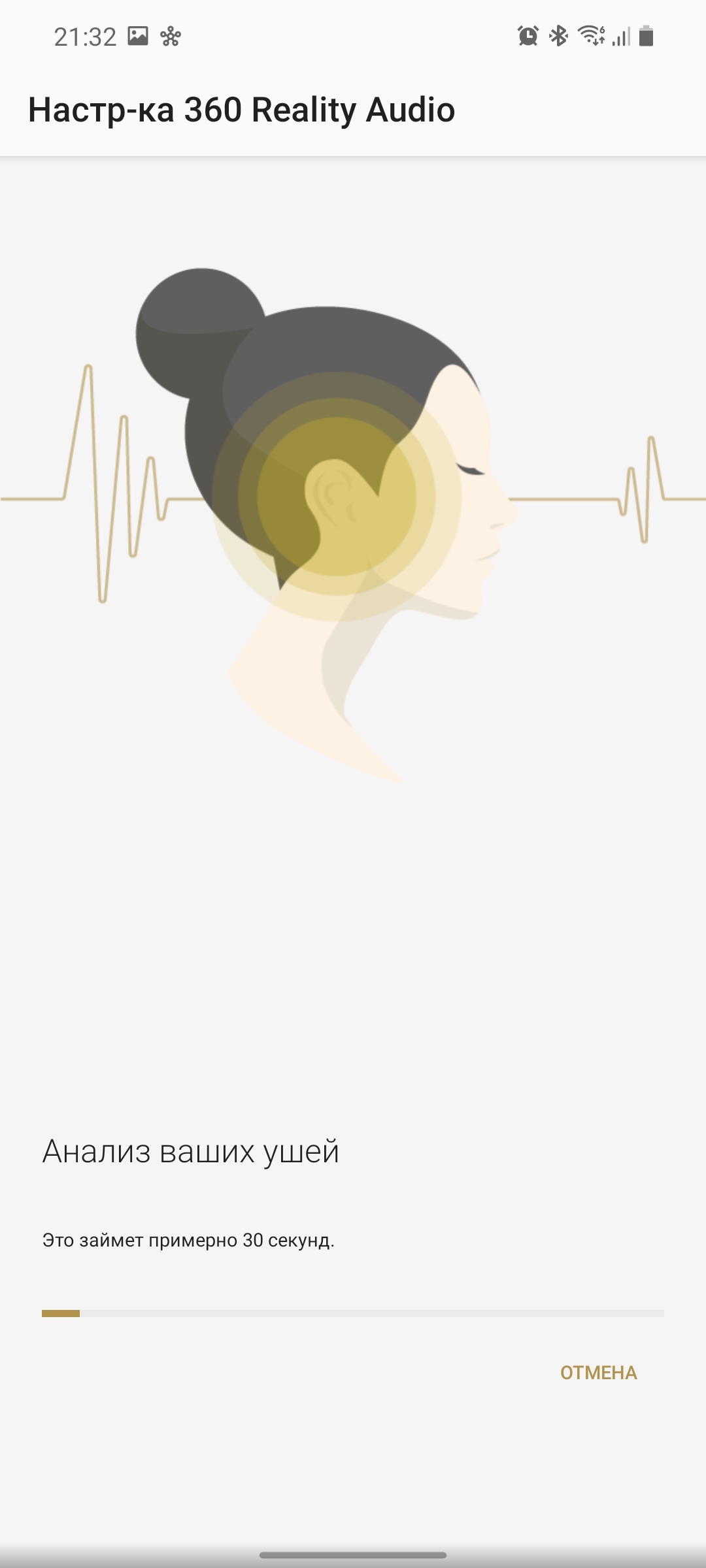
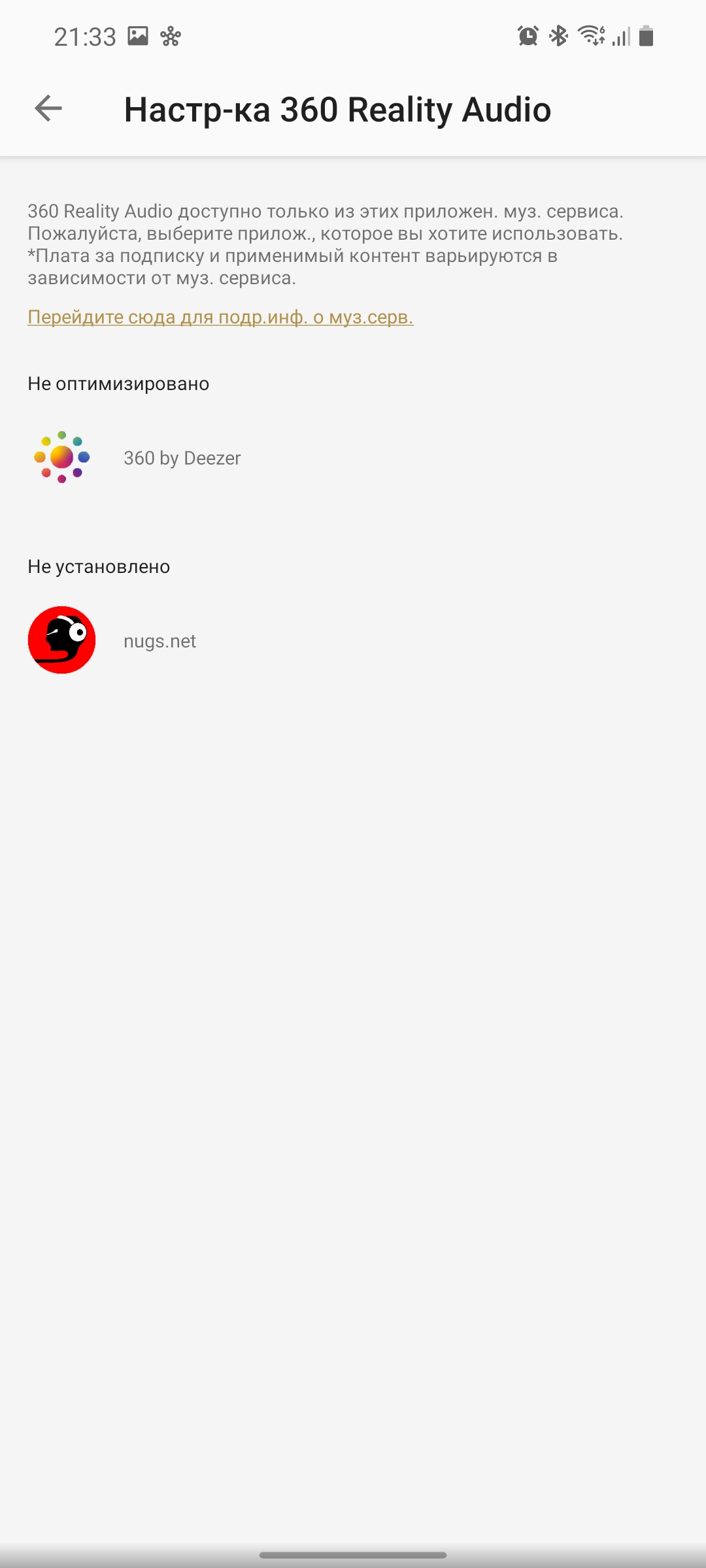


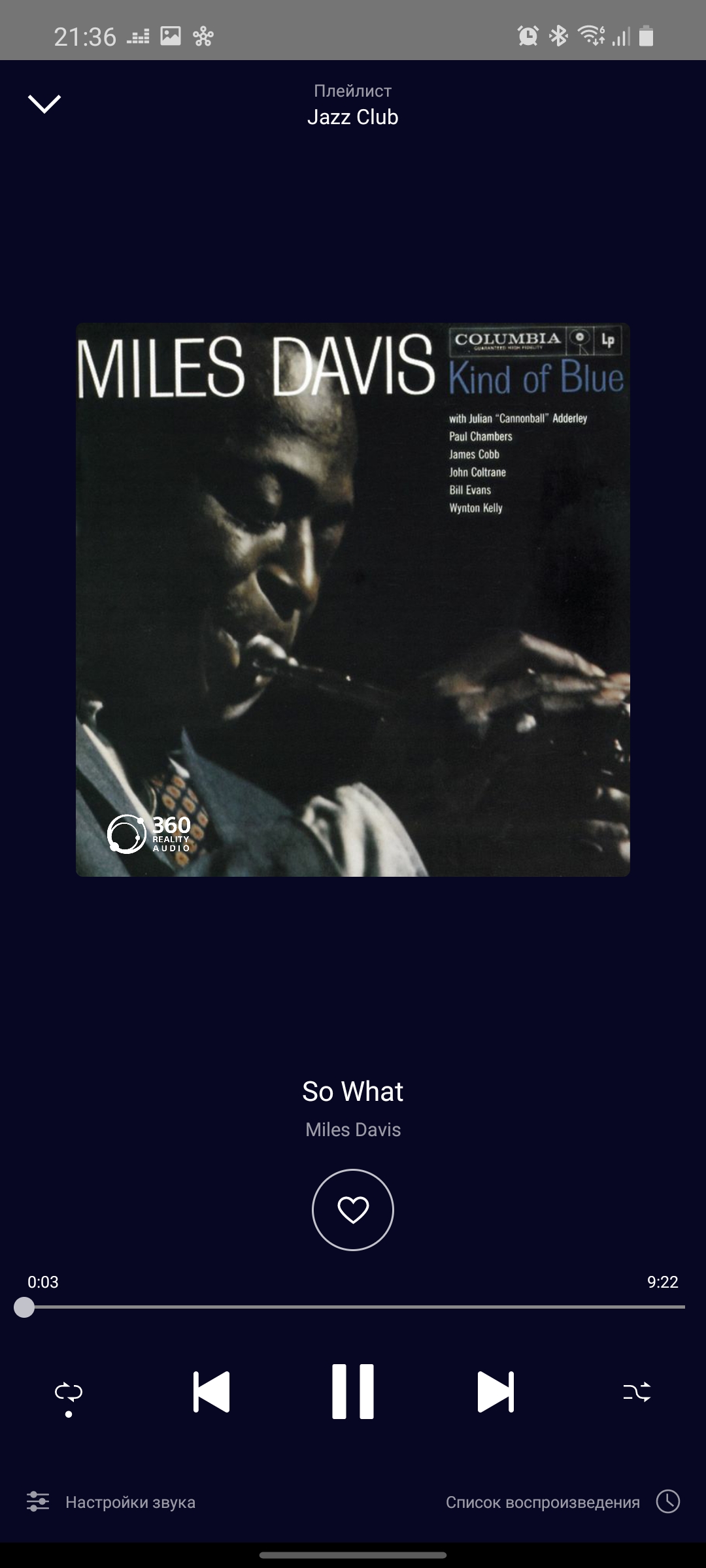









What about sound and microphone quality?
If we consider the category, the target audience and the price range, we can say that the Sony WH-1000XM4 sounds very good. Perhaps more interesting than its closest competitors. For example, the Bose QuietComfort 35 II sound significantly simpler. The Bowers & Wilkins PX7 sounds really well but they yield to the Sony WH-1000XM4 in terms of noise reduction. If we return directly to the sound quality, it seems that Sony wanted to please as wide an audience as possible. The headphones have a very nice V-shaped frequency response, without extremes in certain areas. The lower frequencies are slightly accented, dense and massive. Giving the sound the necessary weight and drive. They are not super detailed and fast, but everything is not bad at all. Midrange frequencies are not "sunk", the amount is fine. They sound quite natural, balanced and with quite good detail. The live instruments and vocals sound nice. The upper frequency range sounds the way it should sound in good quality headphones with a focus on the mass audience. There is enough of them, there is a small rise, but the "dangerous" part of the treble is softened. Due to this there are no sibilants and high frequencies do not cut your ears. On the whole, the Sony WH-1000XM4 sounds pleasant and musical, but it is not audiophile level. However, the model does not aim there in the first place. The best way to listen to the headphones is modern popular music and electronics, but the headphones are also very good in instrumental genres. Now a few words about 360 Reality Audio. From my personal experience, it works pretty much the same way as Virtual Surround Sound in gaming headsets. In this case, the Deezer 360 was used. Overall, it sounds very good and interesting, adding a kind of presence effect. But you can't say it's anything supernatural. Personally, I think it's more interesting to listen to old jazz in this format - Miles Davis sounds great.
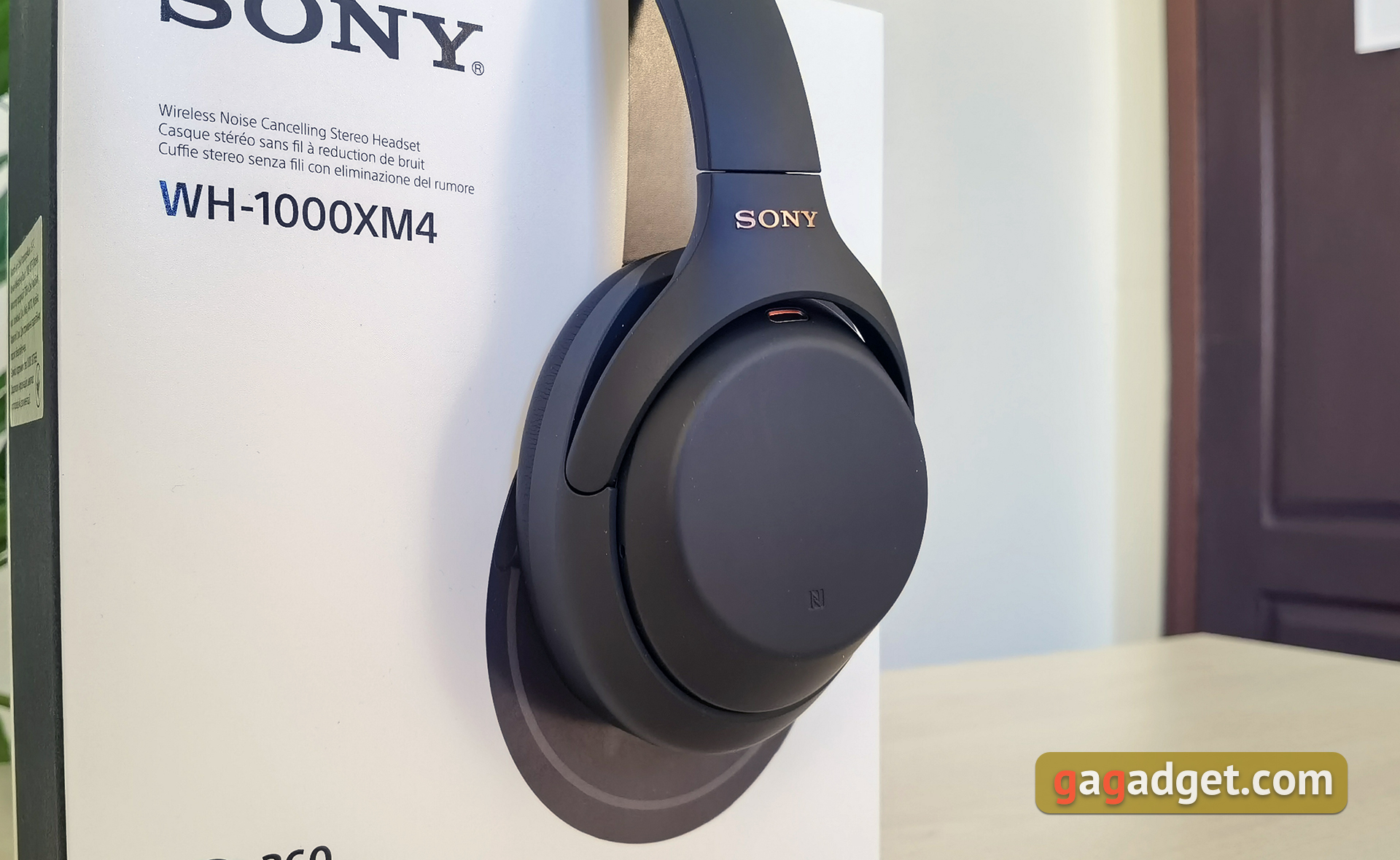
Judging by the design, three microphones on the left earpiece are used for voice transmission. With their main task they cope far from perfect, but quite good. In noisy places interlocutor hears the surrounding noise, but the voice in it is not lost and the information is heard. Even during a conversation in the subway the person I am talking to does not have to ask me back. In terms of sound quality - no surprises: the voice sounds rather flat and rather muffled, as in all models without a remote microphone.
How well does the noise suppression work?
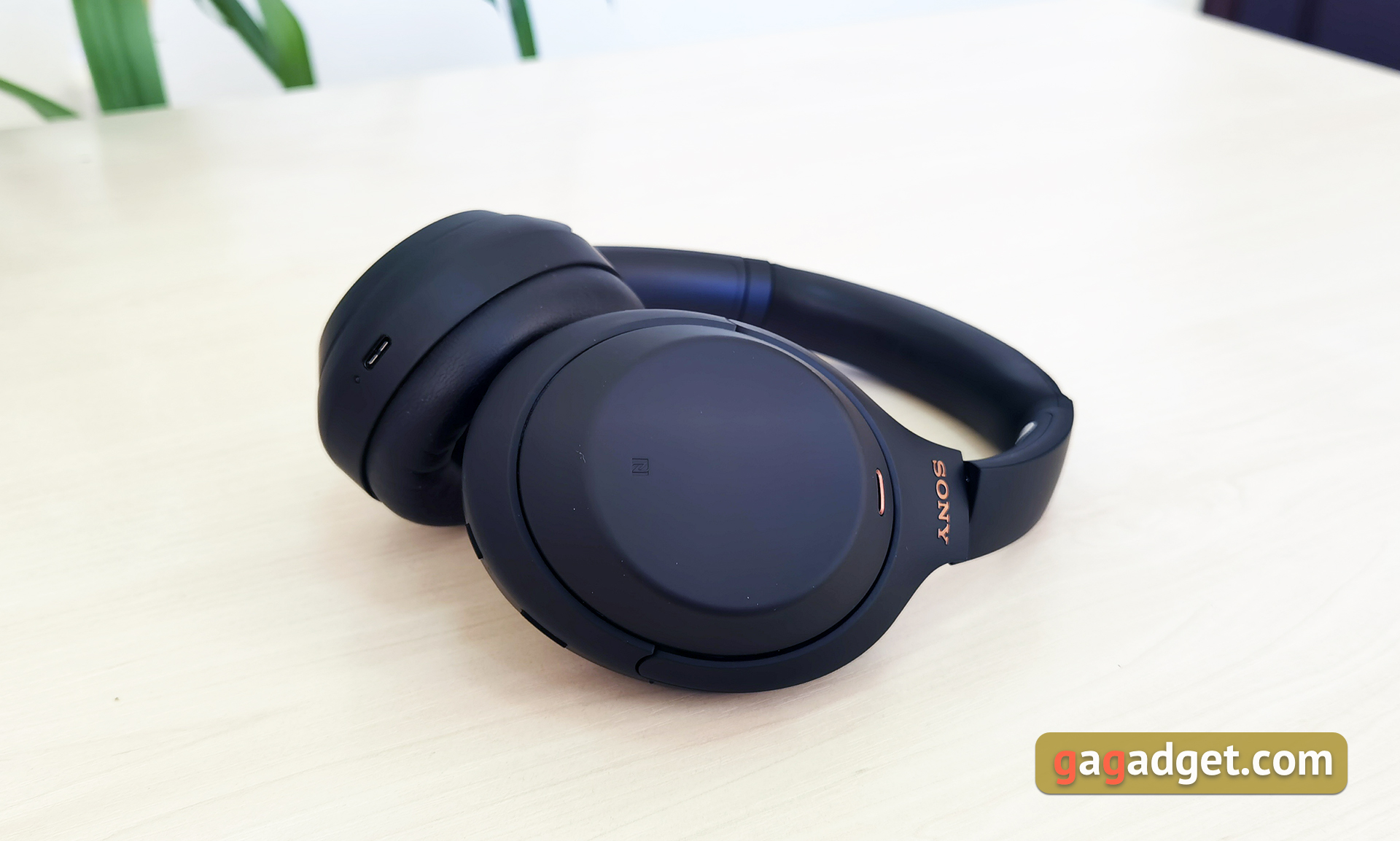
An active noise cancelling system will not be enough to cut off external noise as effectively as possible. The headphones themselves need to have good sound isolation. The Sony WH-1000XM4 does just that: the ear cushions fit snugly over your head and provide good "protection" from outside noise. The active noise cancelling system worked perfectly in previous models as well. I can't compare directly, but the Sony WH-1000XM4's noise cancellation works just fine. It almost completely cuts off the listener from surrounding sounds. In particular, all sorts of monotonous hum at low frequencies. In the office they are almost totally silent, while the hum of a subway train is audible only when music playback is paused. And it is not a hum, but something more like a rustling somewhere in the distance. So, no external noise disturbs listening to music in any way. That said, even at the maximum level of noise cancellation operation, I didn't get any unpleasant vacuum sensation. Although I suppose that is very much an individual thing. That said, there are a bunch of the above settings for different users and situations that make it as easy as possible to use the headphones. You don't have to take them off to talk, and for the street you can turn on the appropriate mode to hear what's going on around you.
What about battery life?
Sony claims that the WH-1000XM4 can last up to 30 hours on a single charge with noise cancellation turned on and up to 38 hours without noise cancellation. But keep in mind that these are the figures at average volume and using the SBC codec. During testing, LDAC was used exclusively and the volume level was usually 70-80%, on average, the headphones were used 3-4 hours a day. In the end, I didn't manage to get them down in a week, so the battery life is very good. Fast charging is supported and a 10 minute boost should be enough for 5 hours of use. Again, according to Sony's claim.
Bottom line: three things to know about the Sony WH-1000XM4:
- The implementation of the active noise cancellation system in Sony WH-1000XM4 is one of the best (if not the best) at the moment.
- Headphones have high-quality, driving sound, support codecs SBC, AAC, LDAC, but do not support aptX, aptX HD;
- Sony WH-1000XM4 very long run on a single battery charge.
| Sony WH-1000XM4 | |
| Emitters | 40mm dynamic |
| Playable Frequency Range | 4Hz - 40,000Hz |
| Form Factor | Full-size |
| Connectivity | Bluetooth 5.0, NFC |
| Supported Codecs | SBC, AAC, LDAC |
| Range | 10m |
| Wired connection | USB Type-C |
